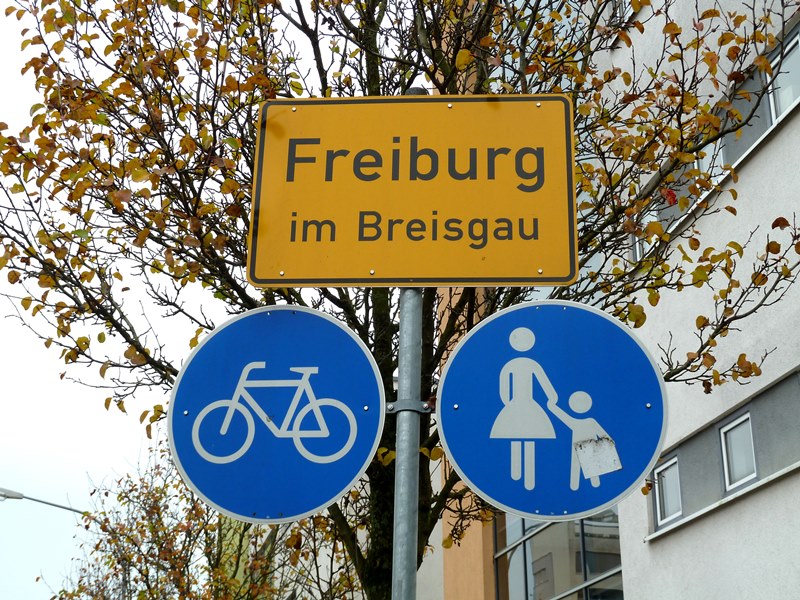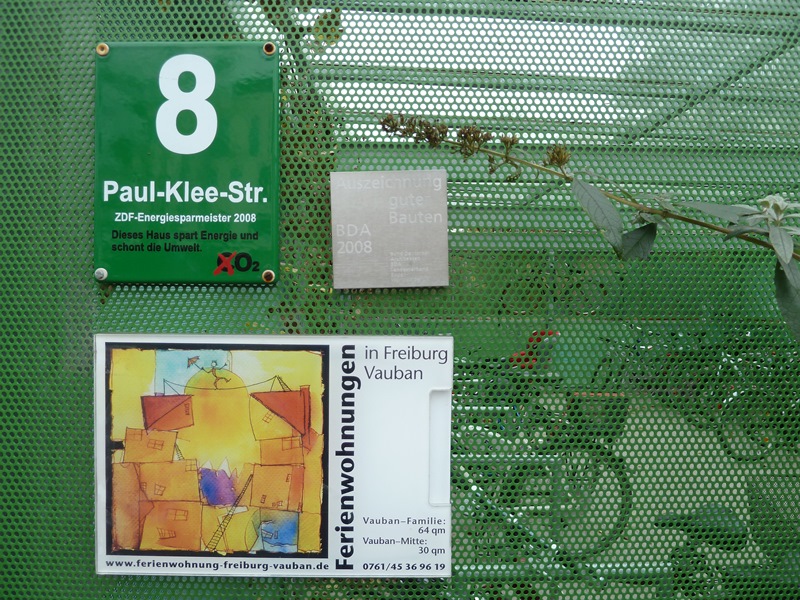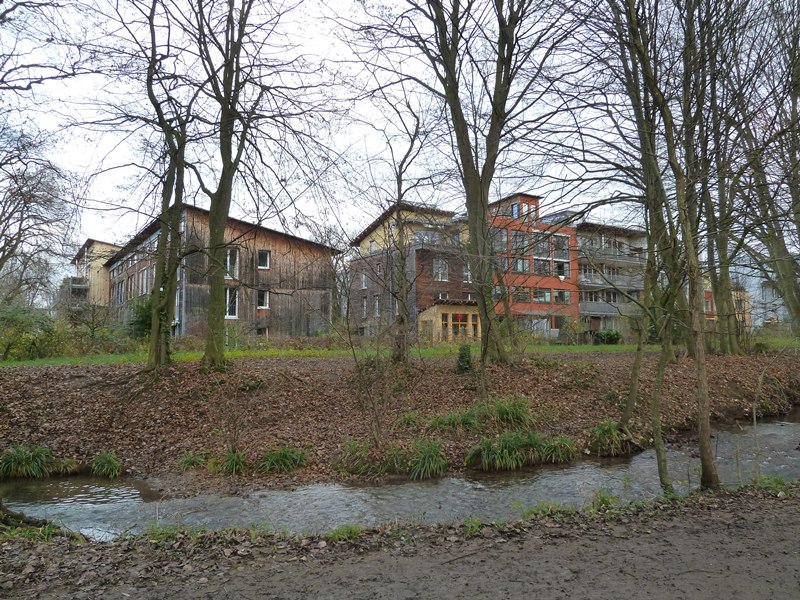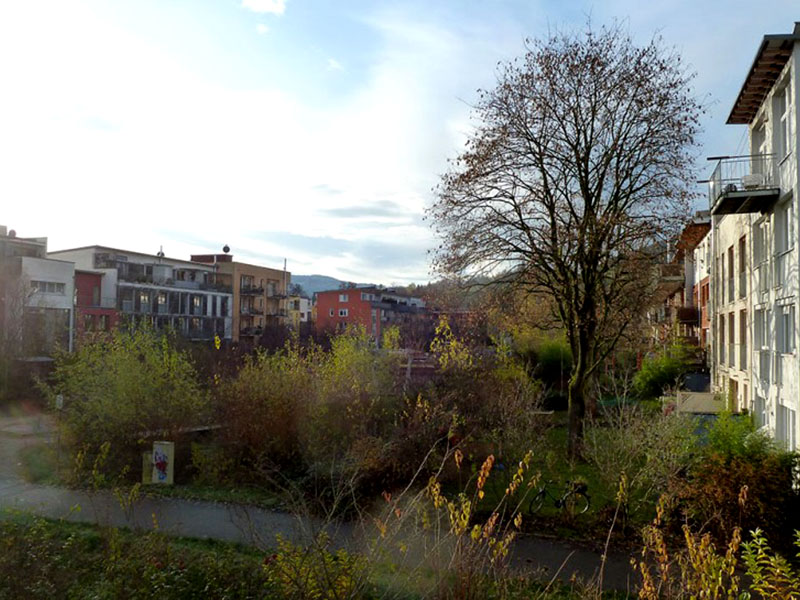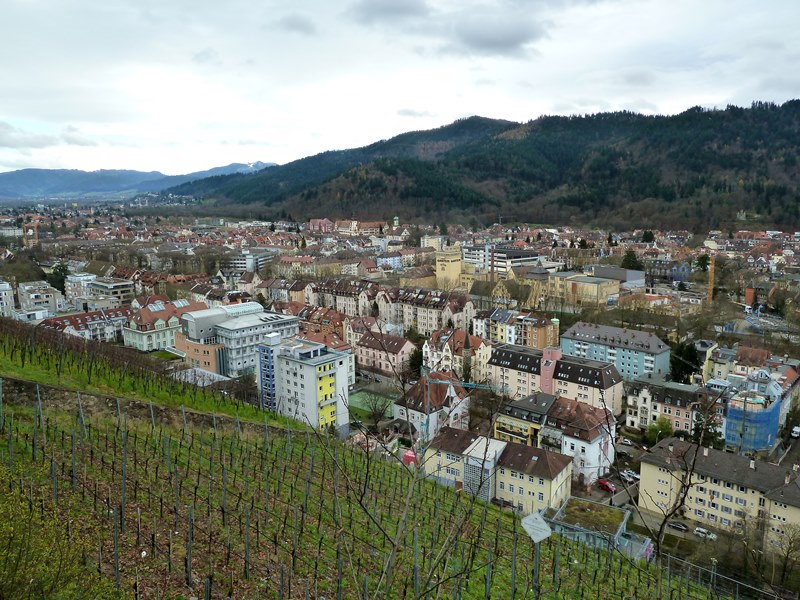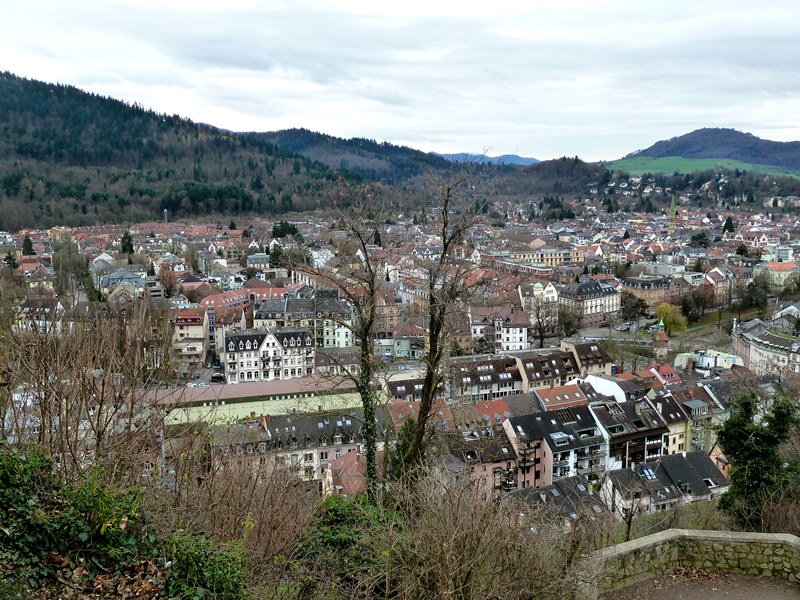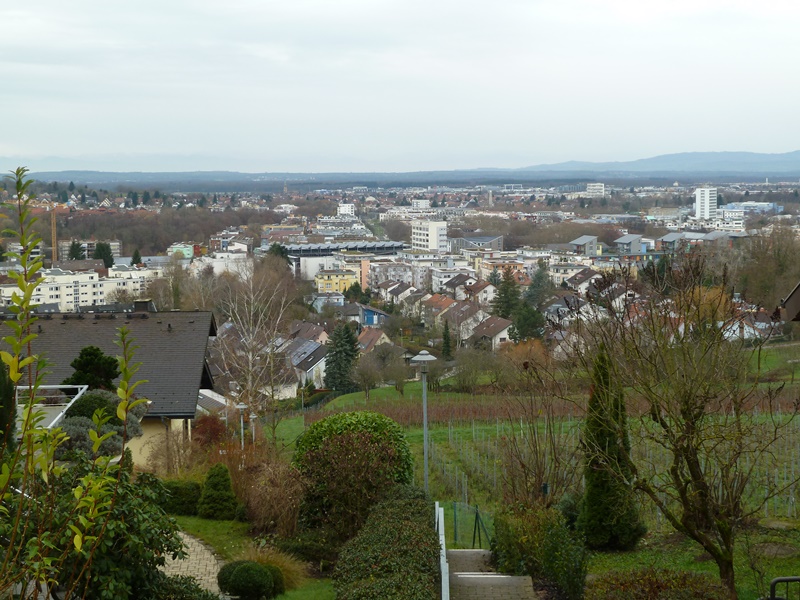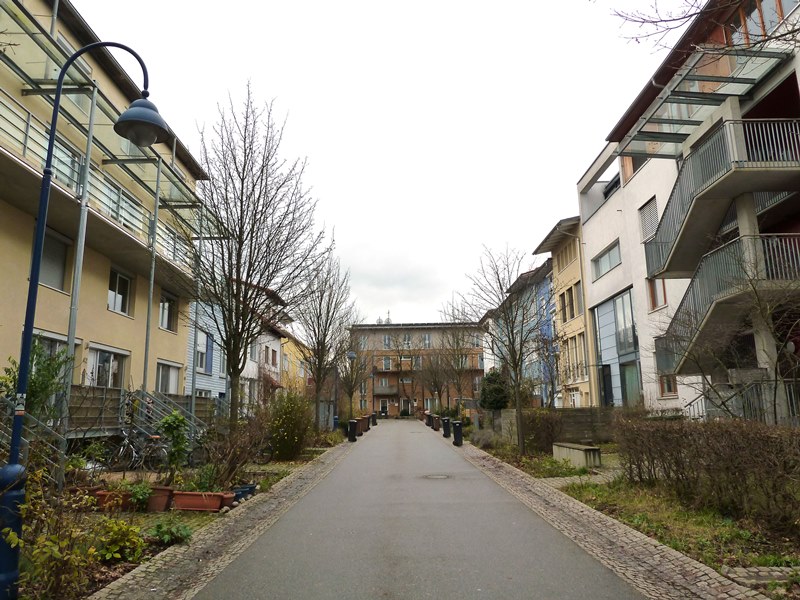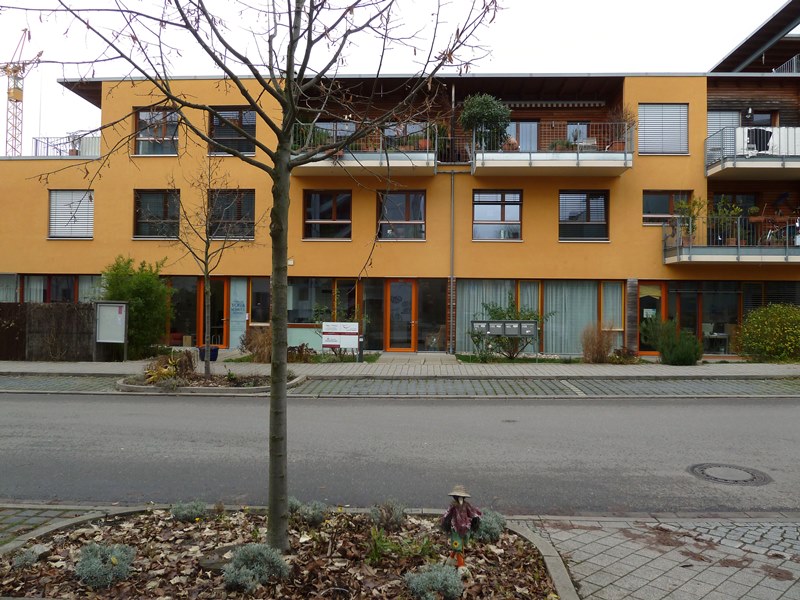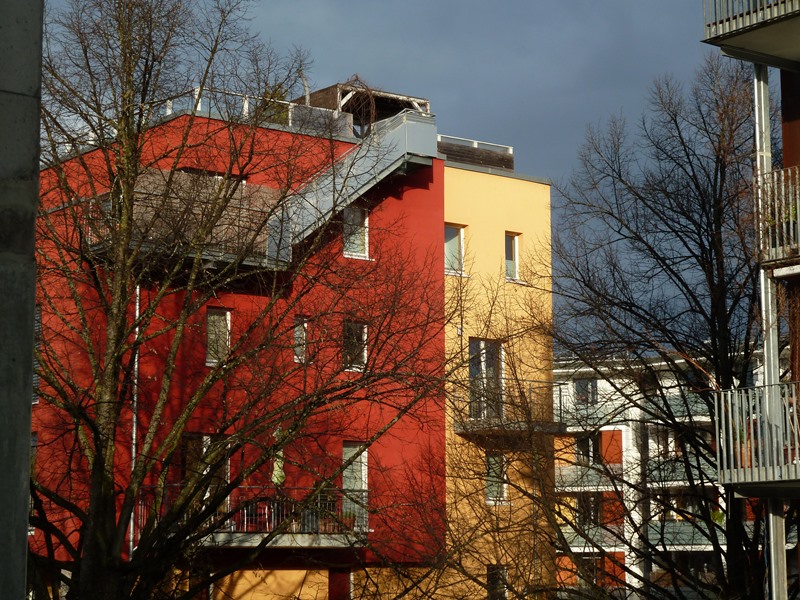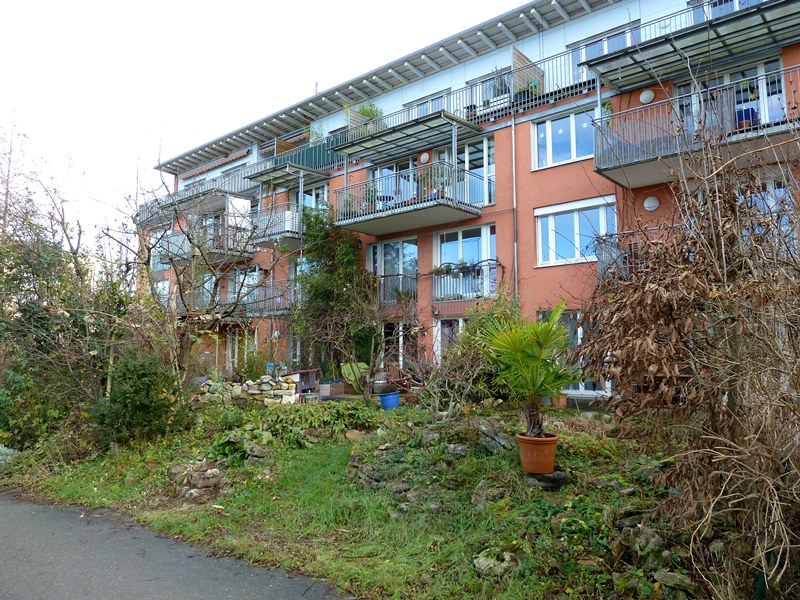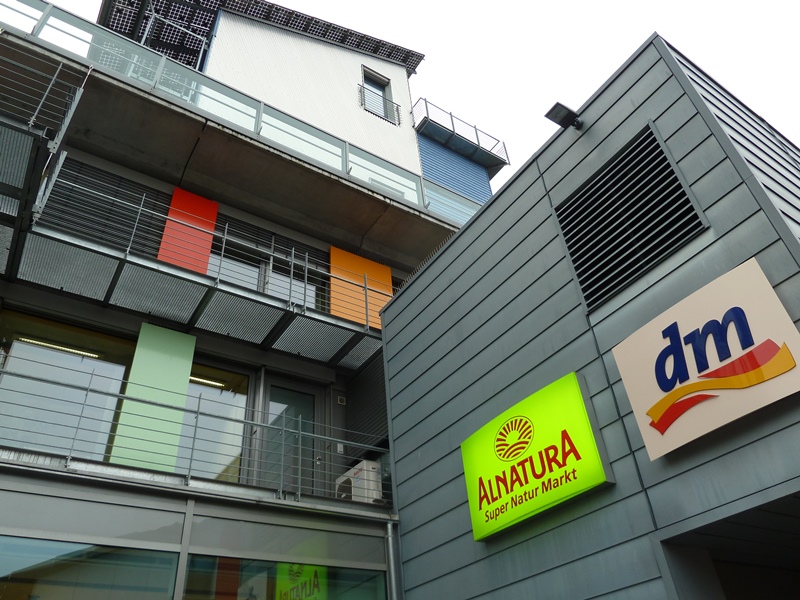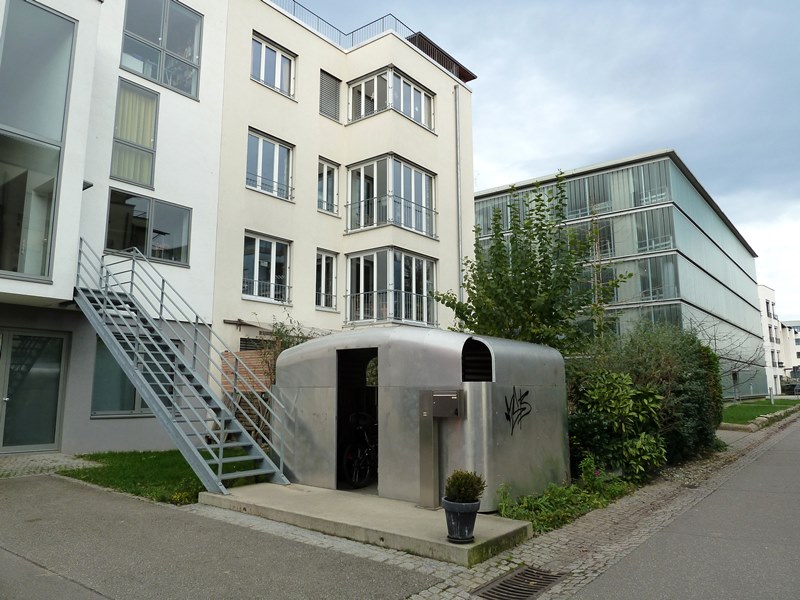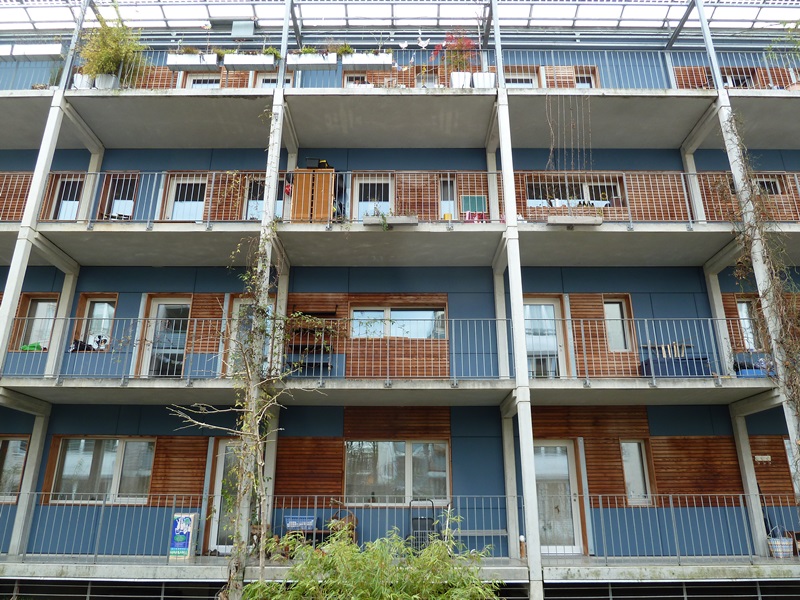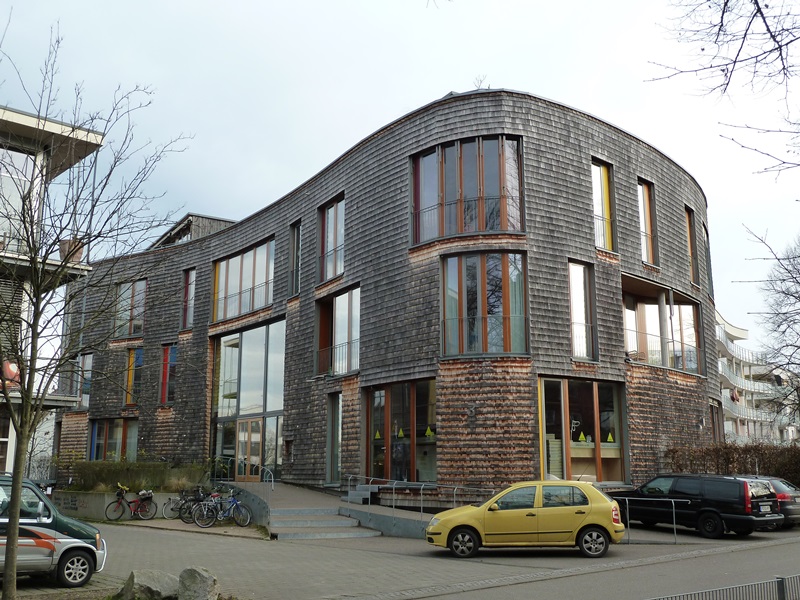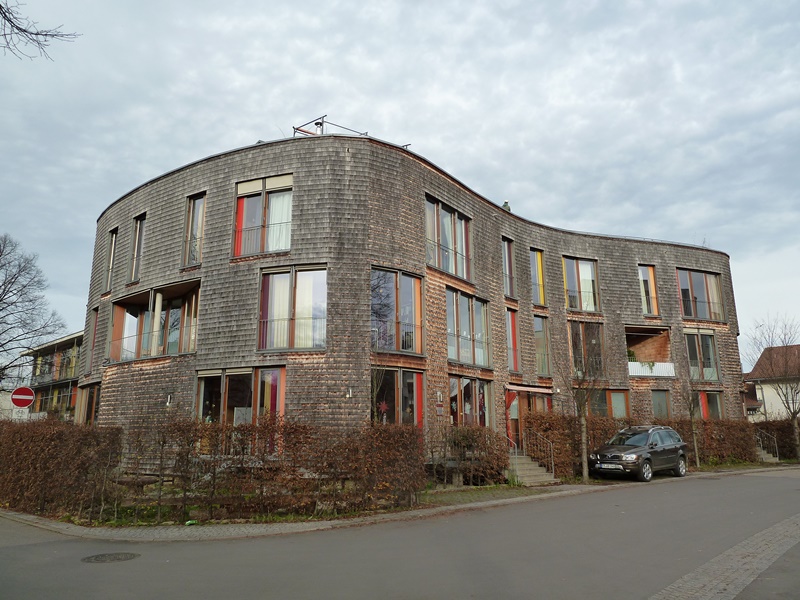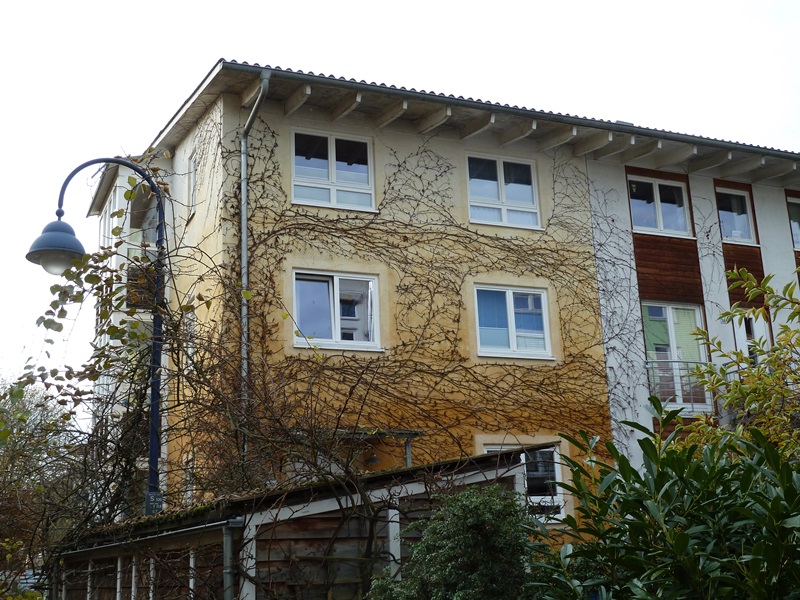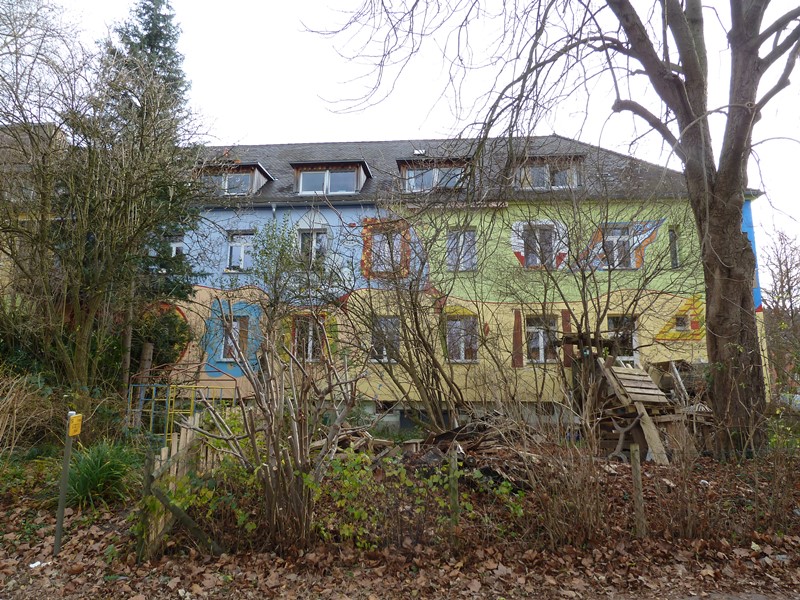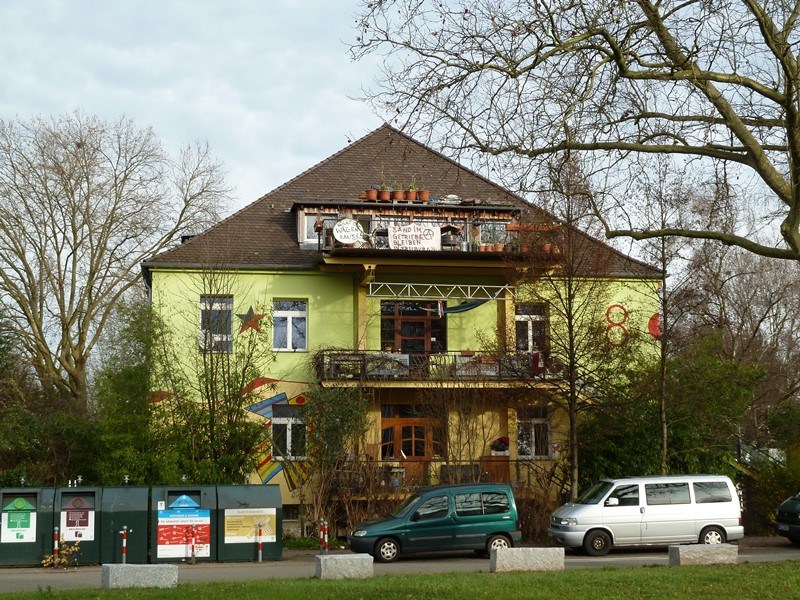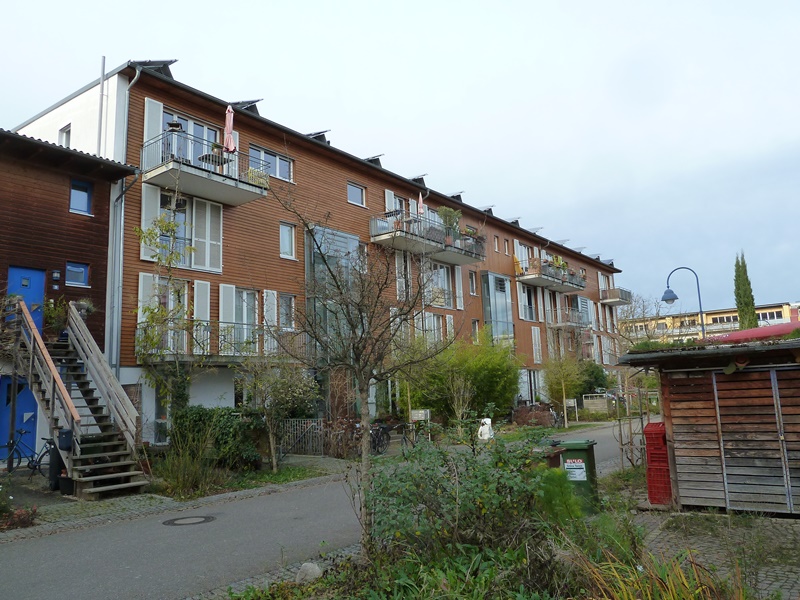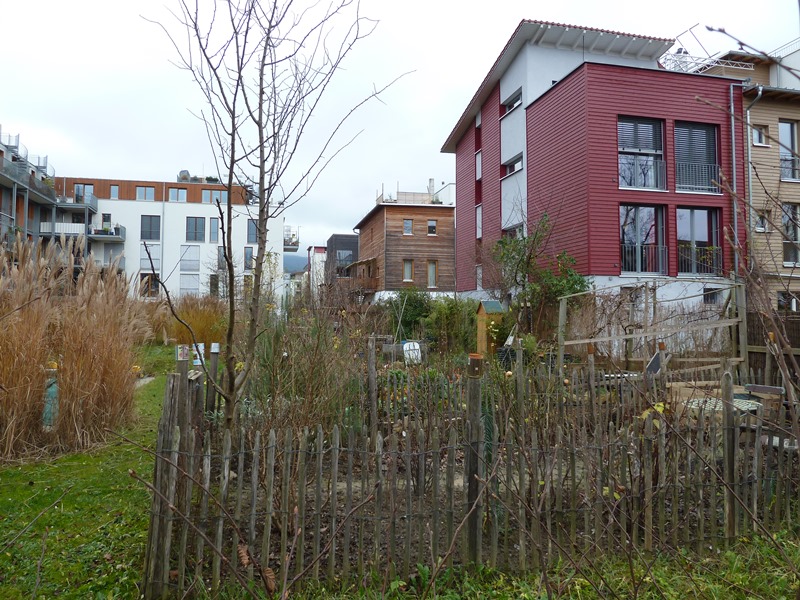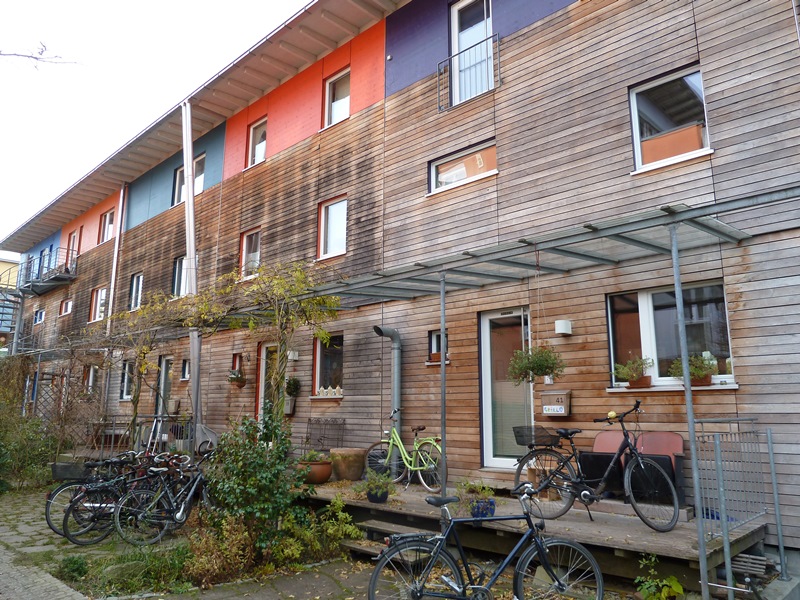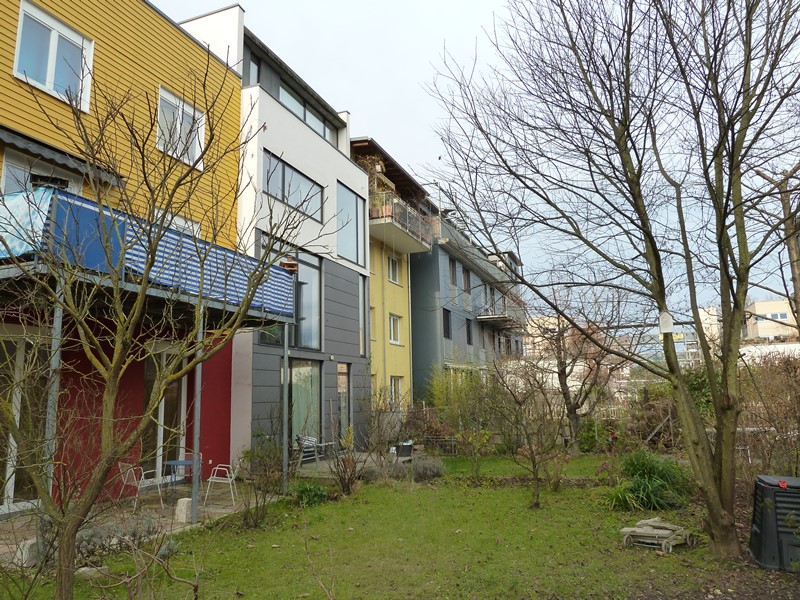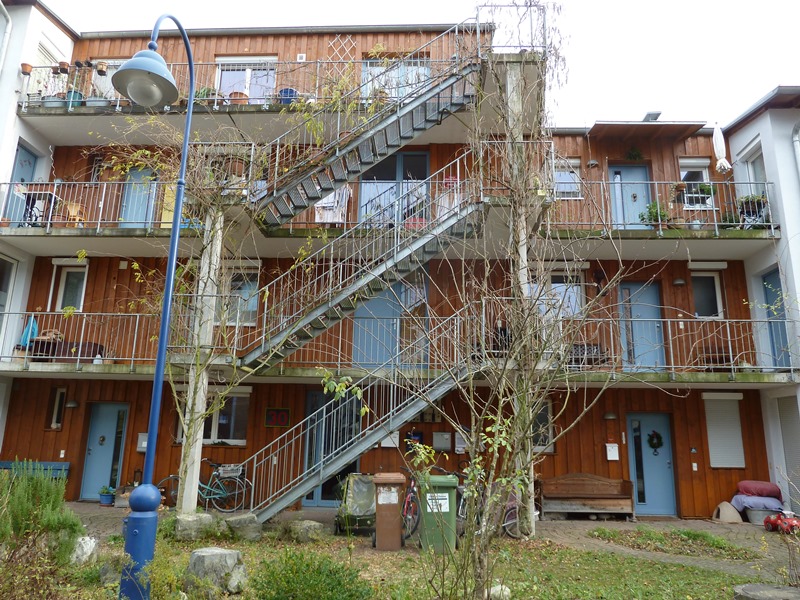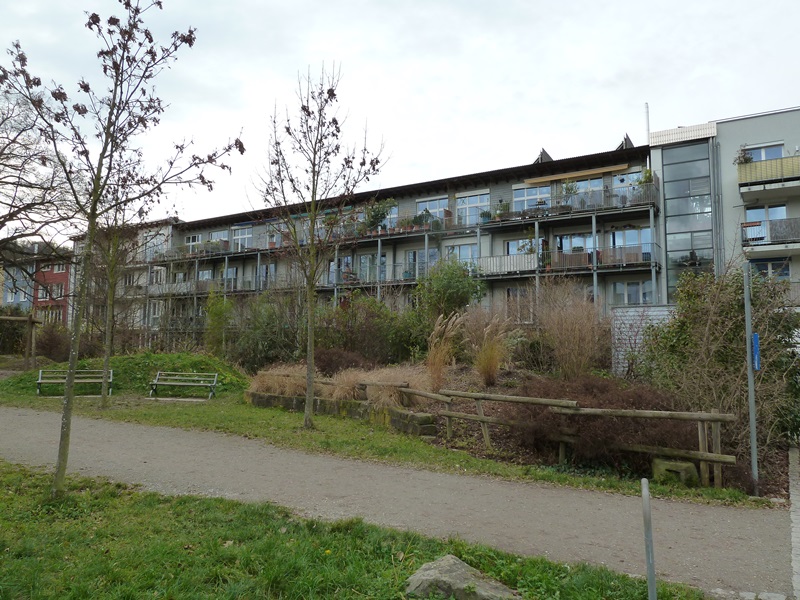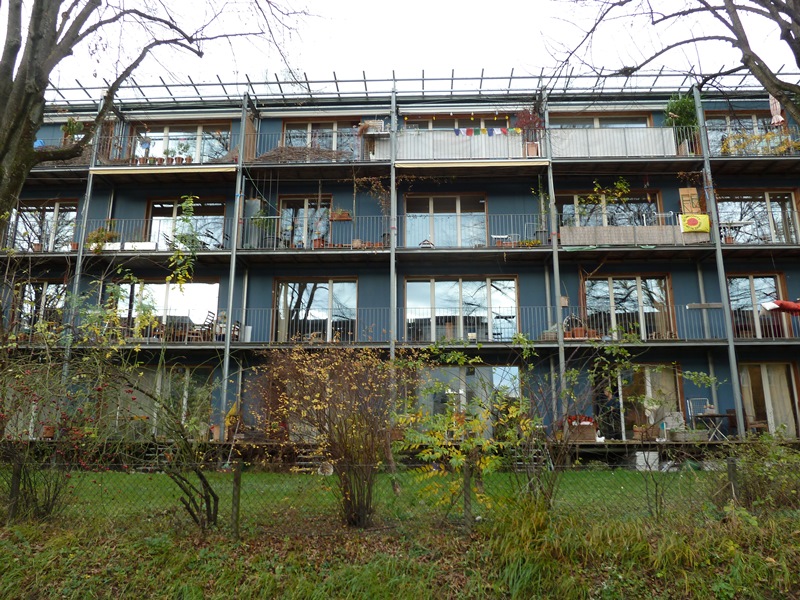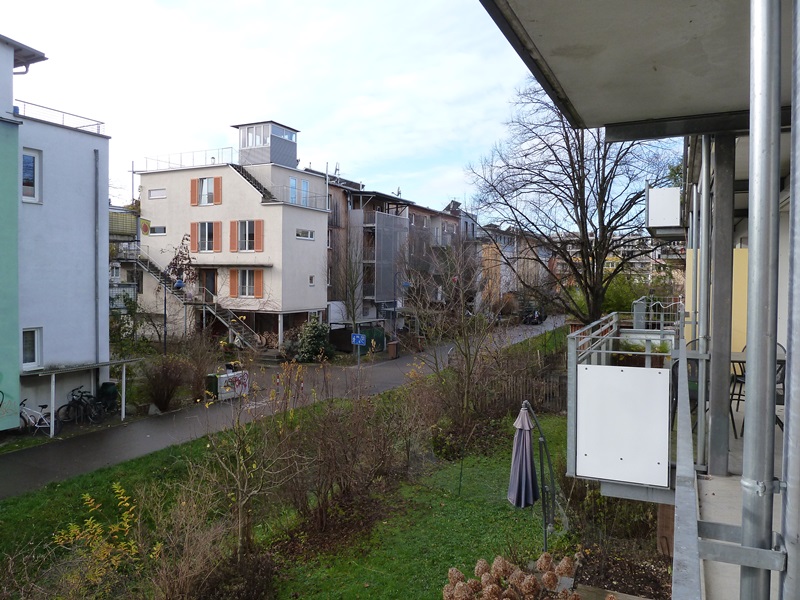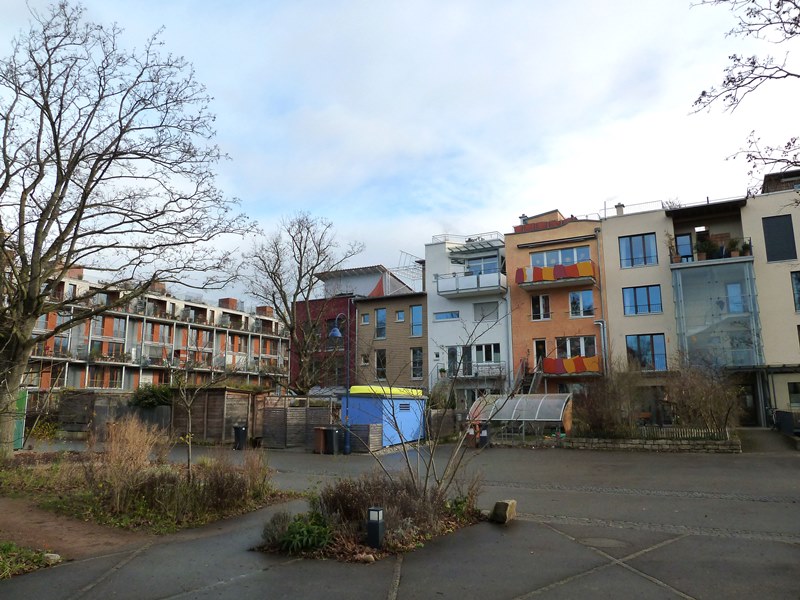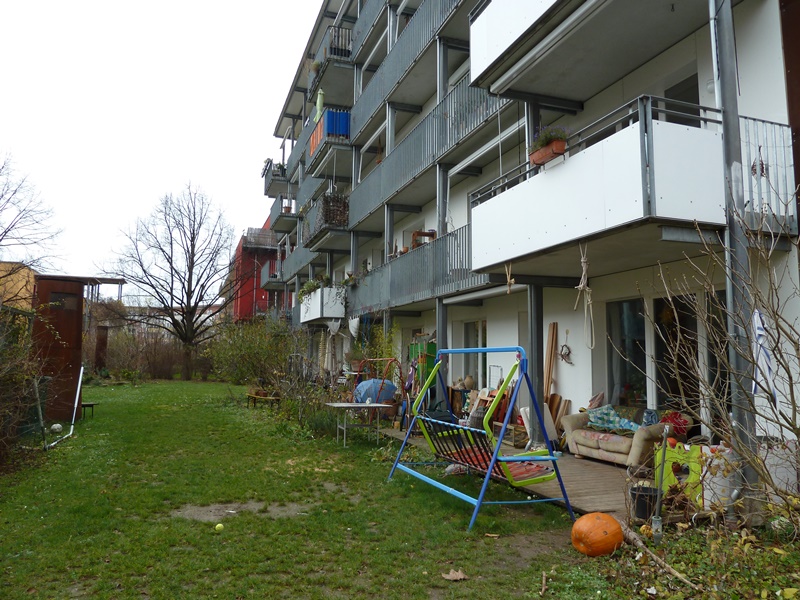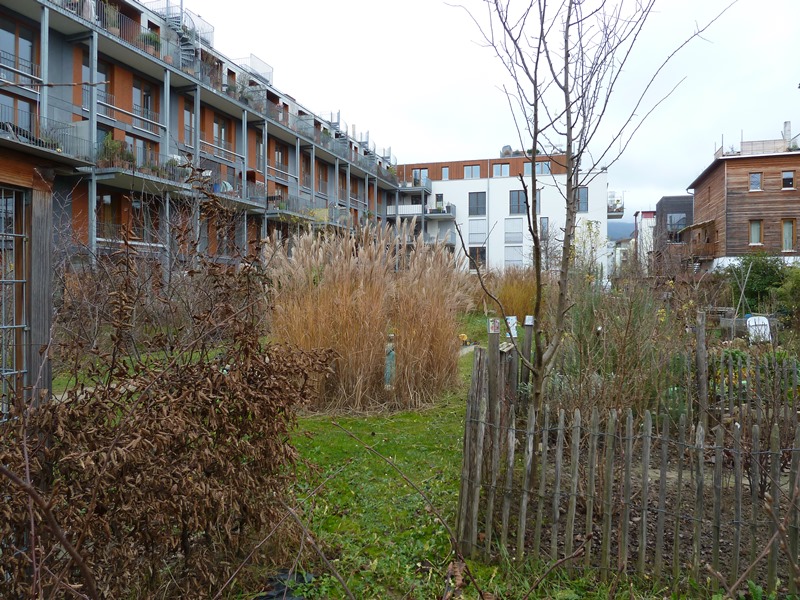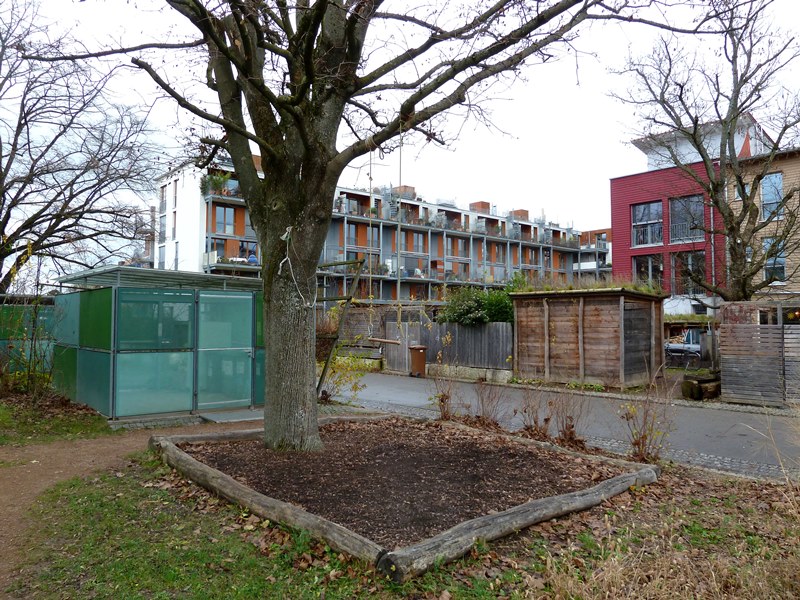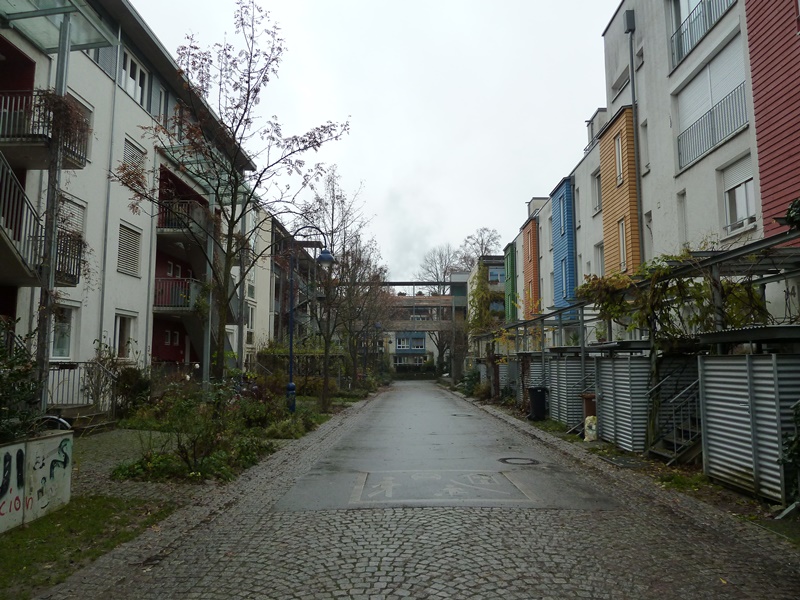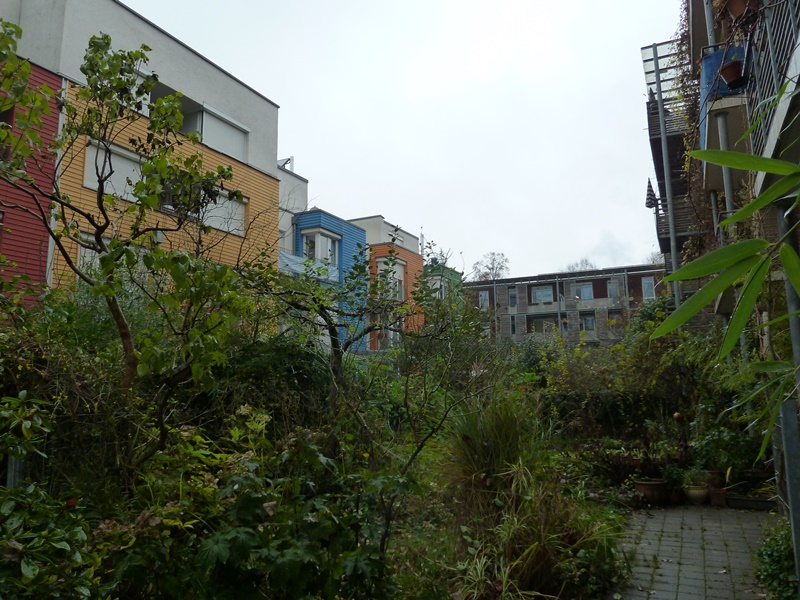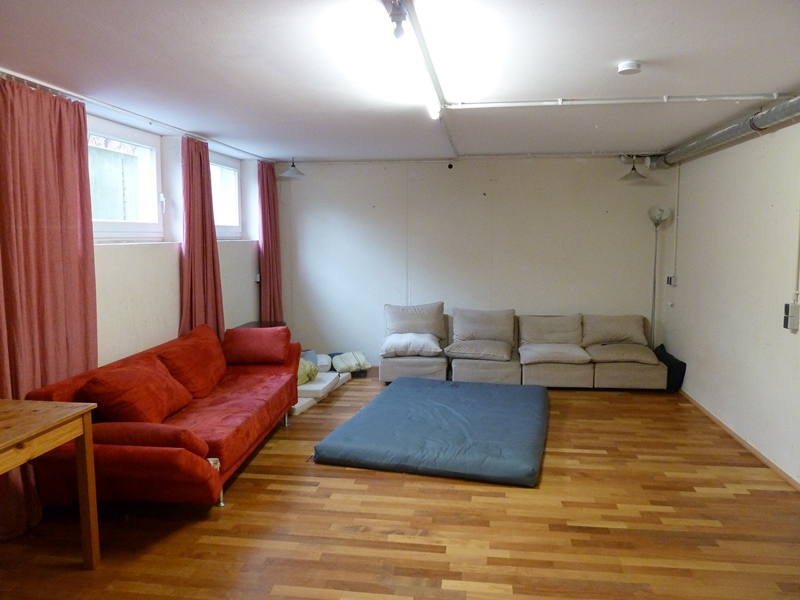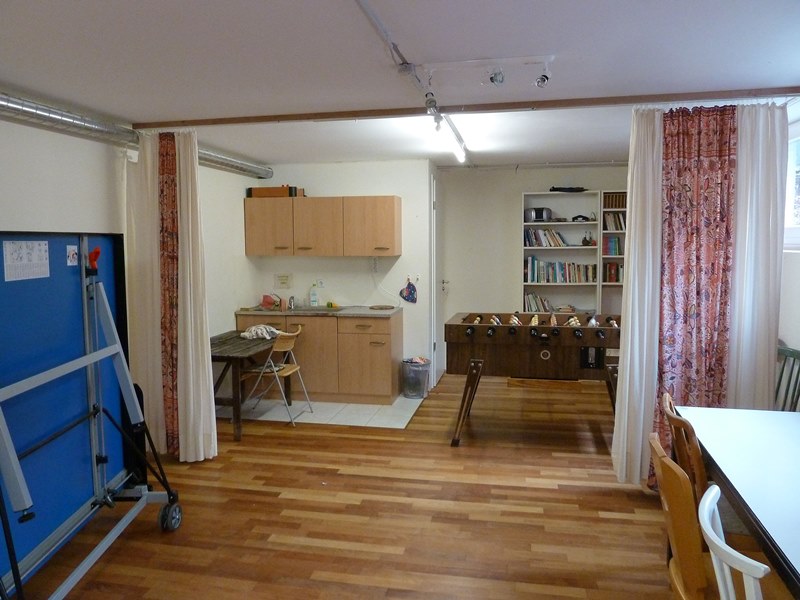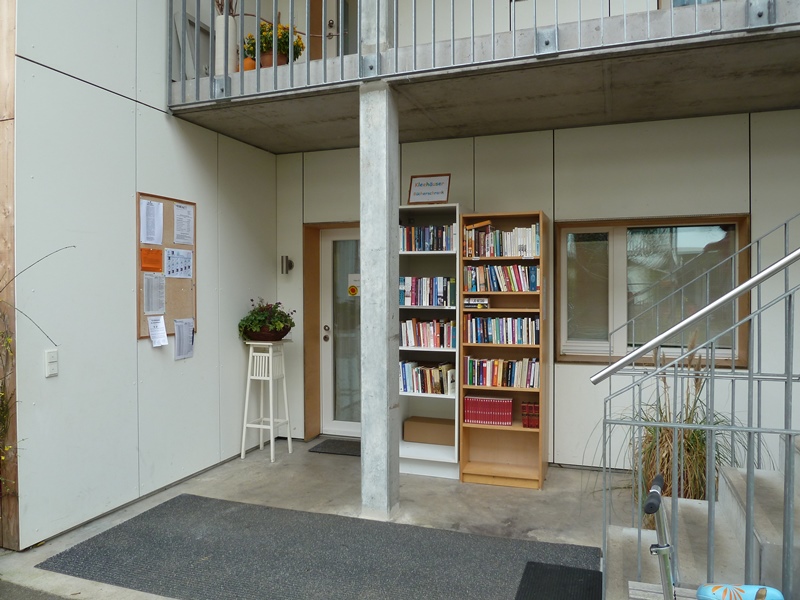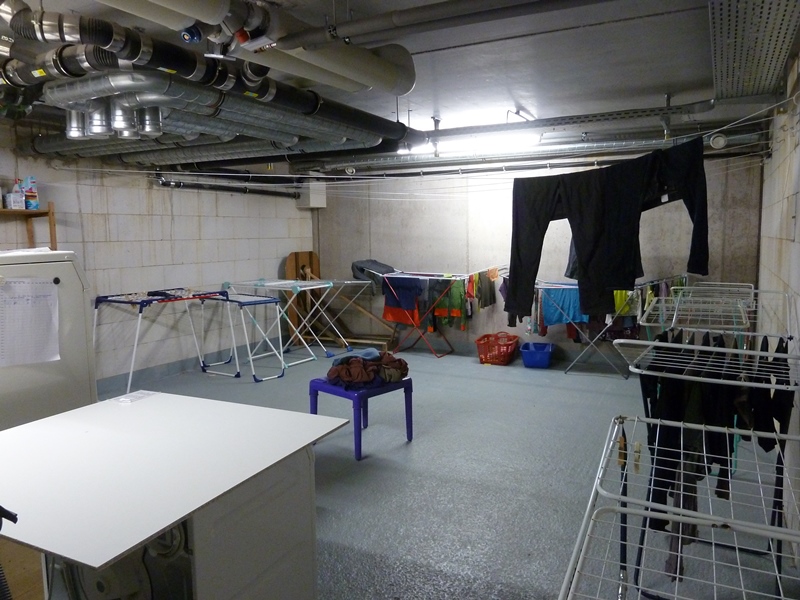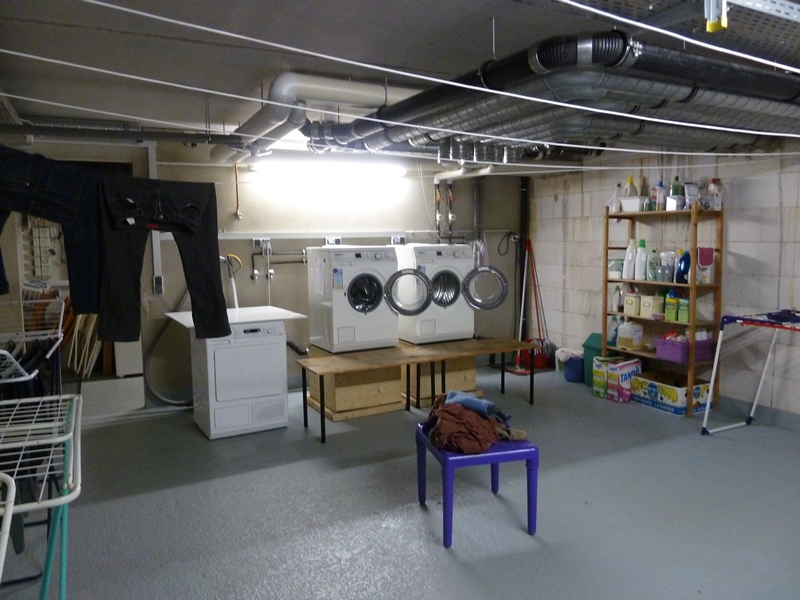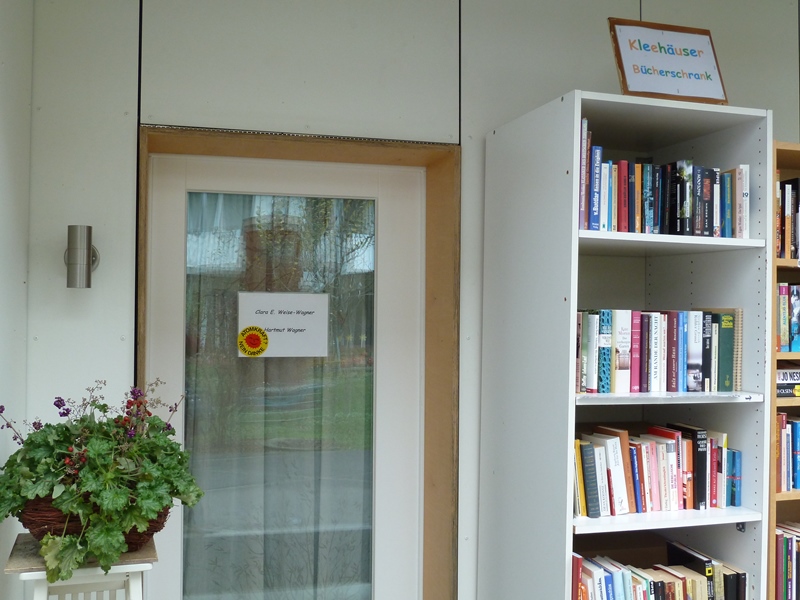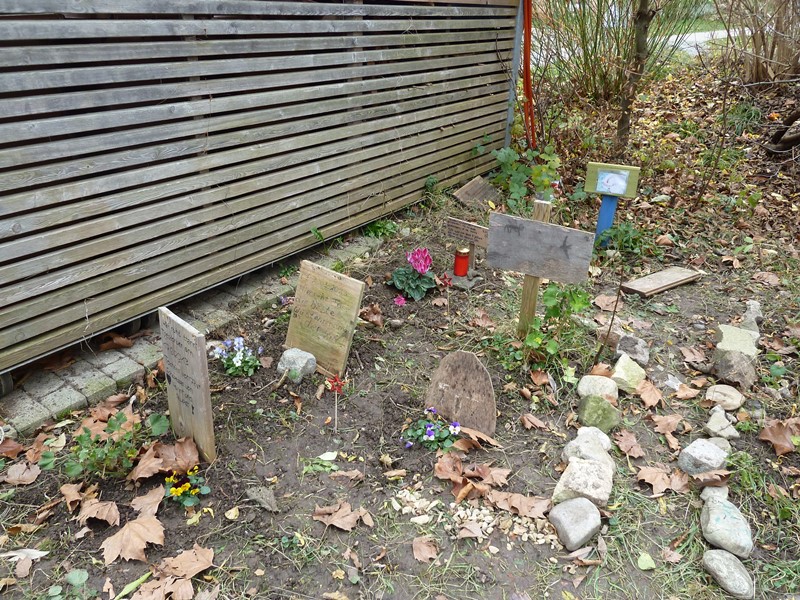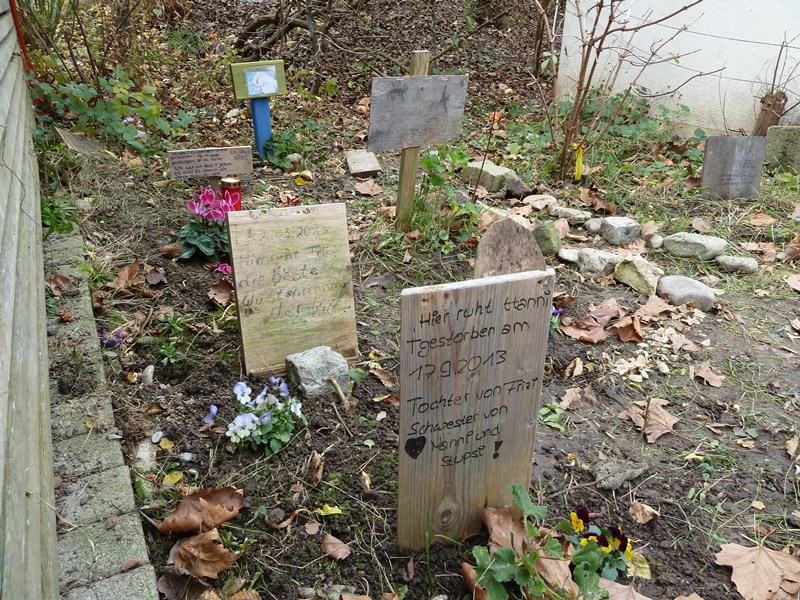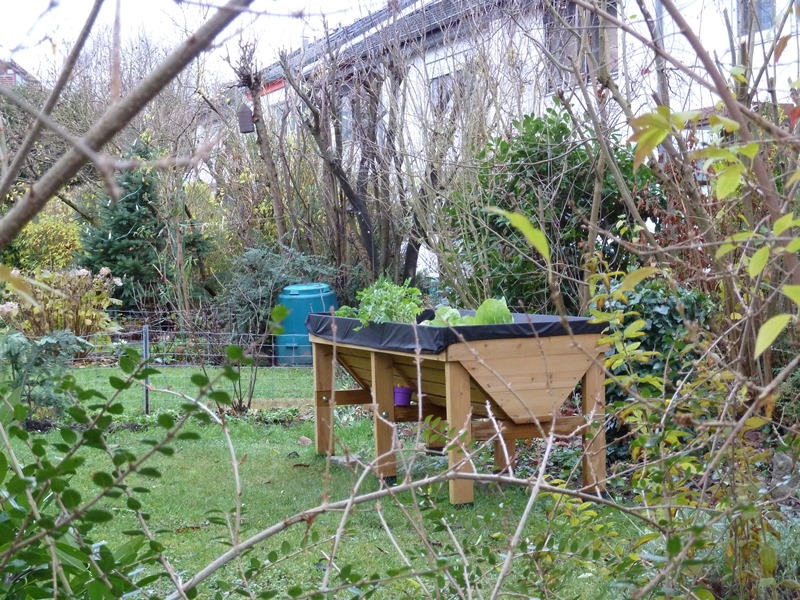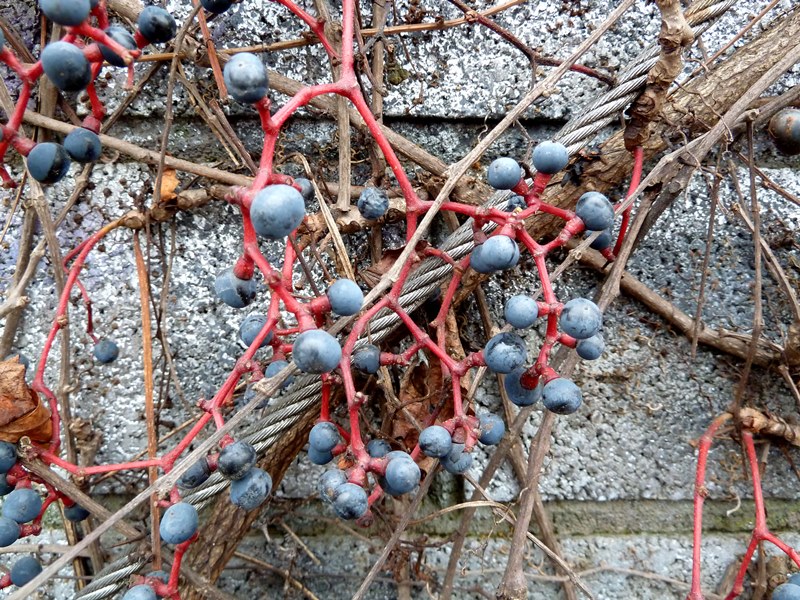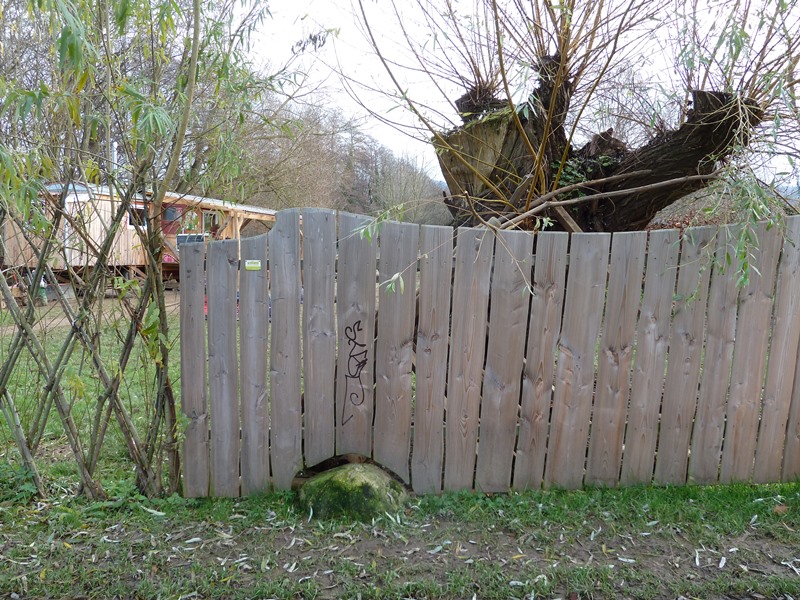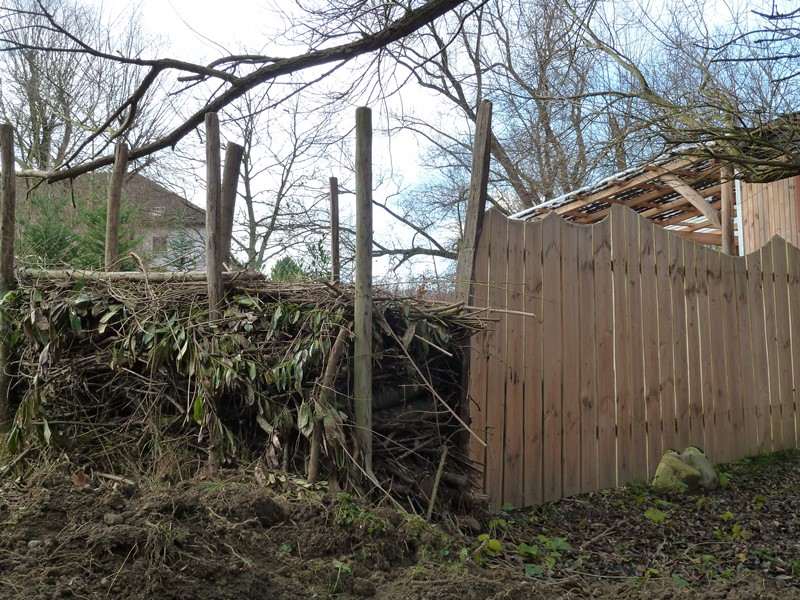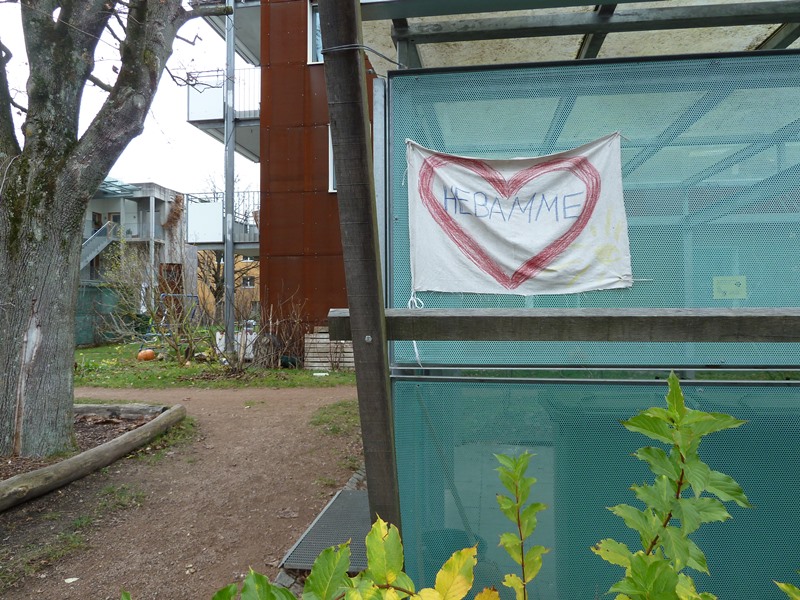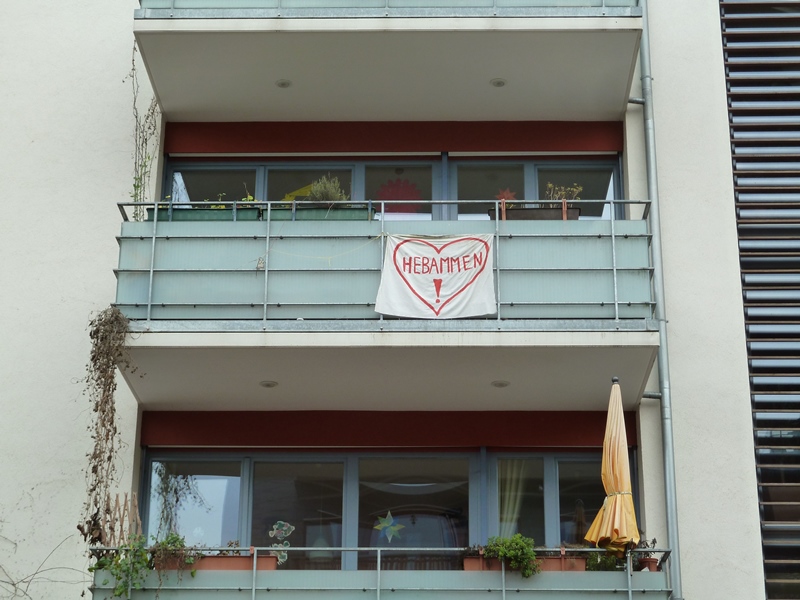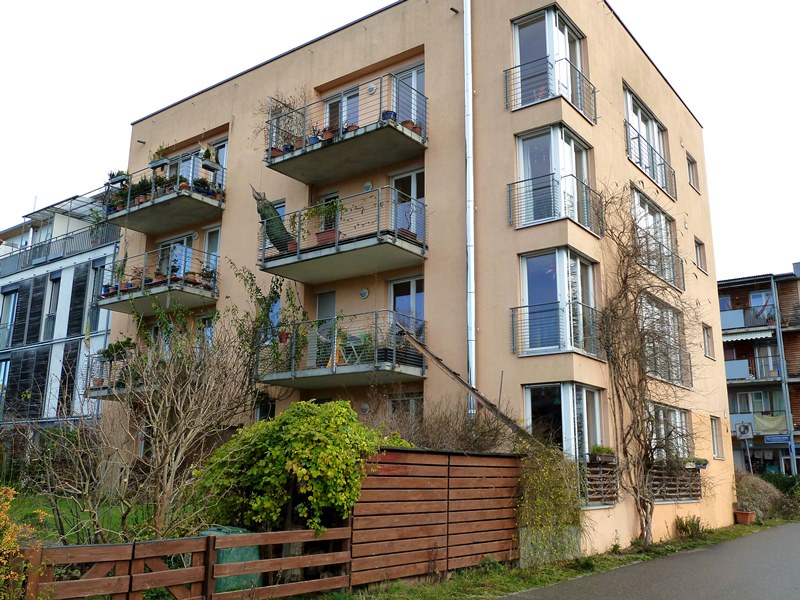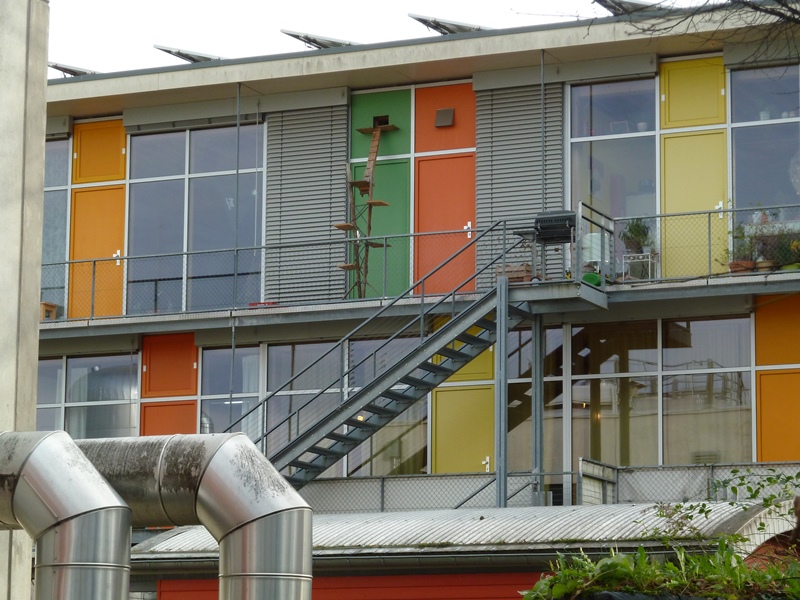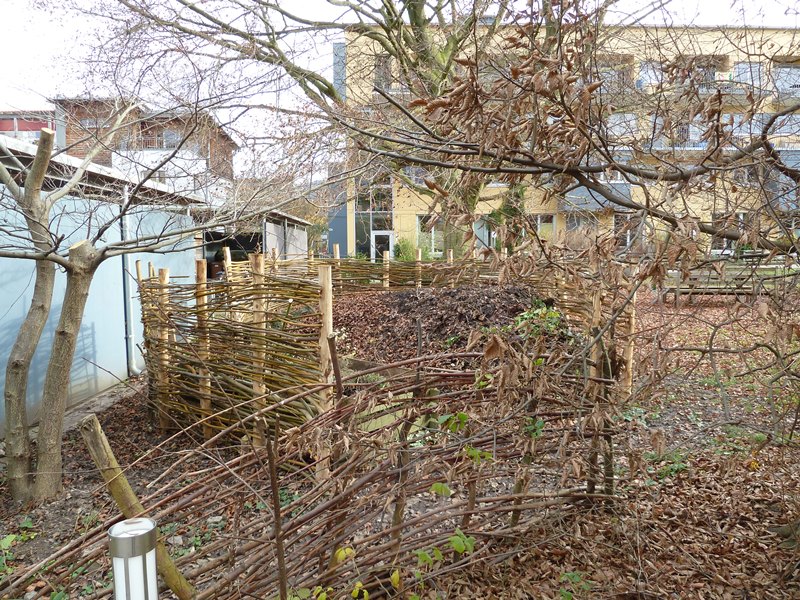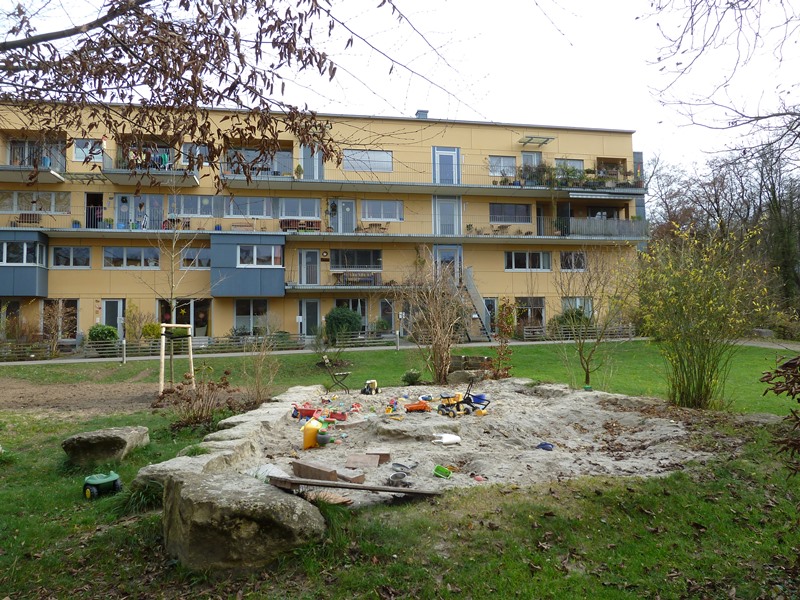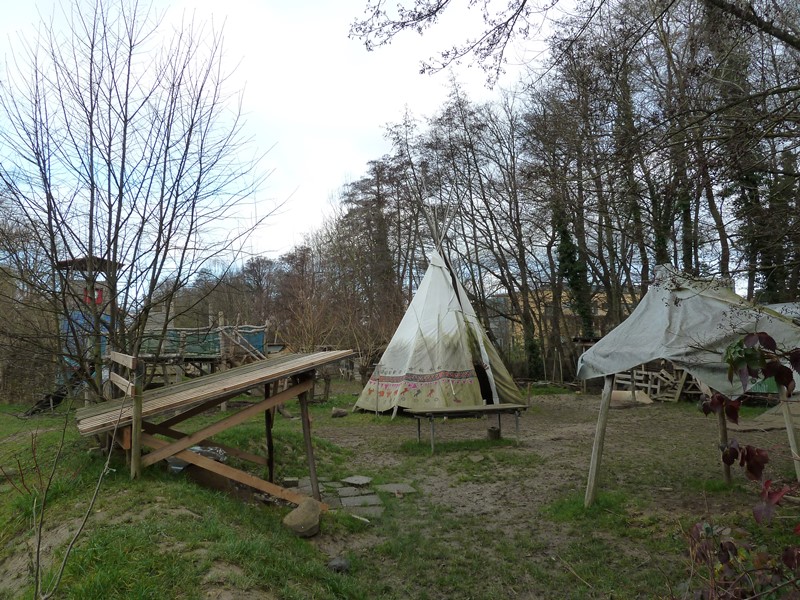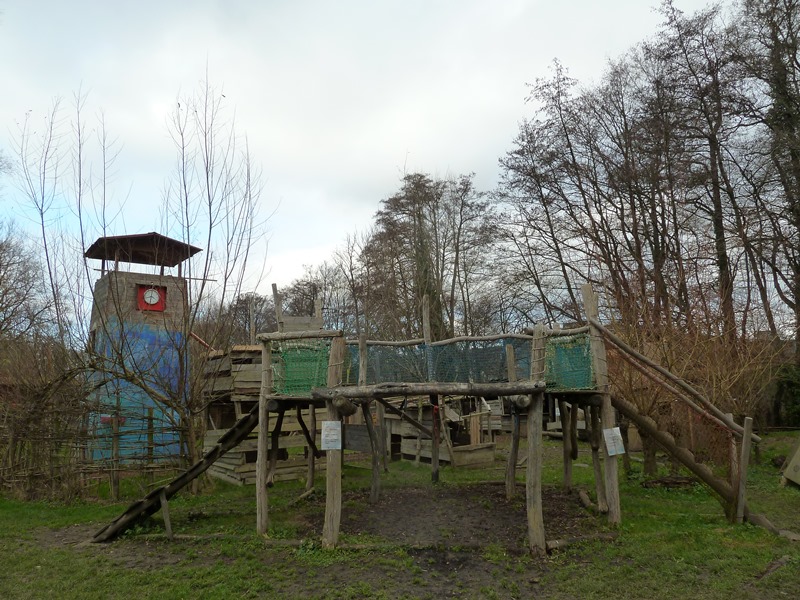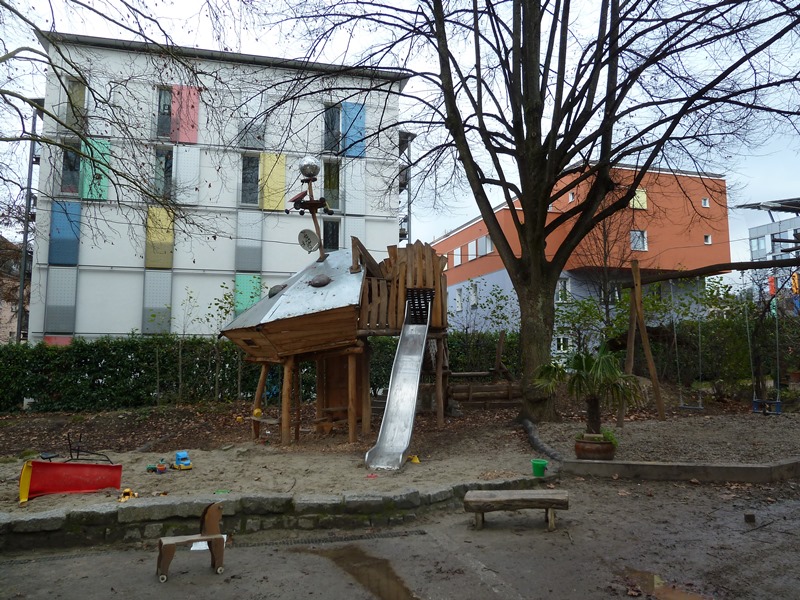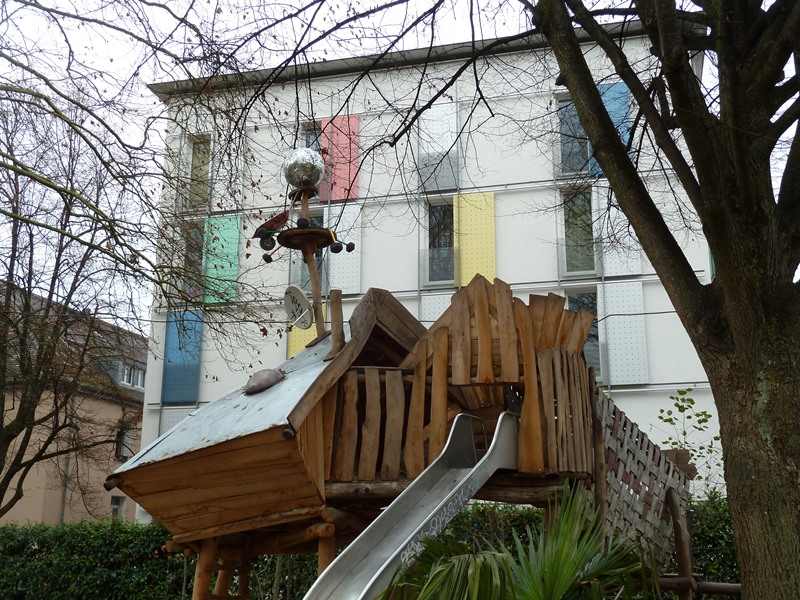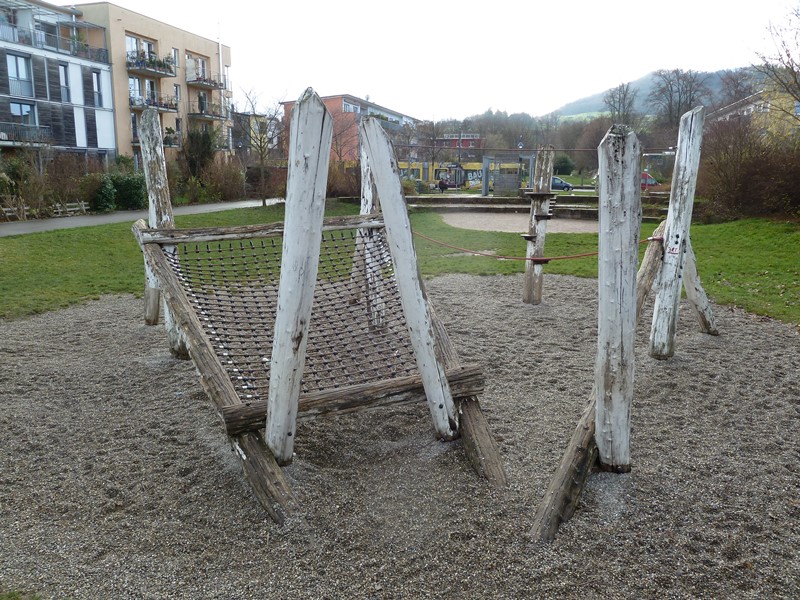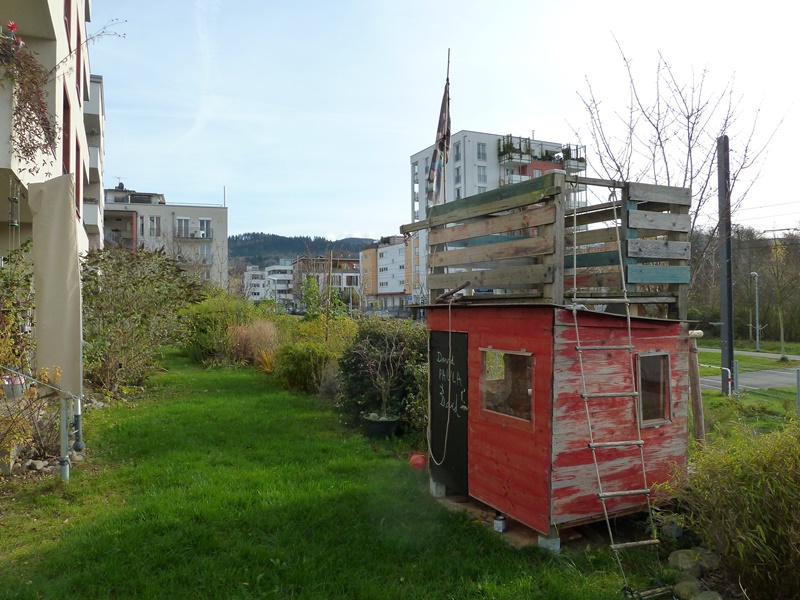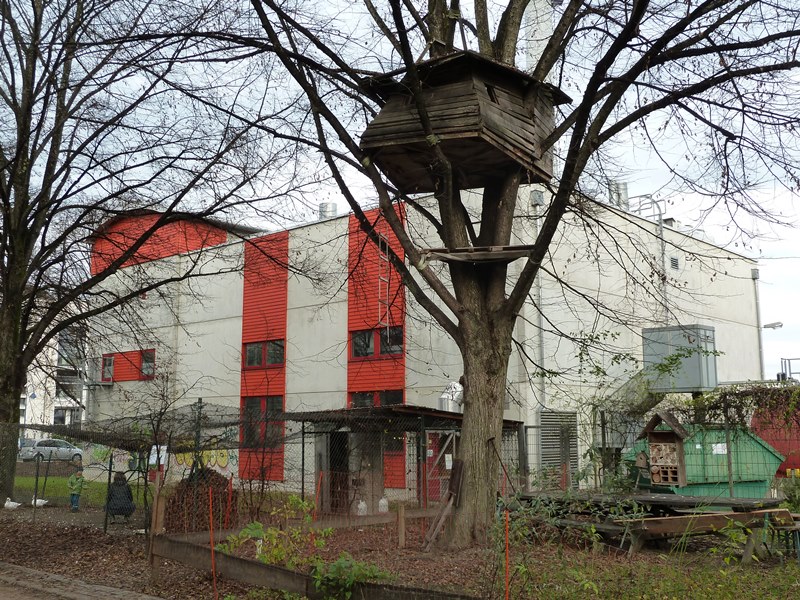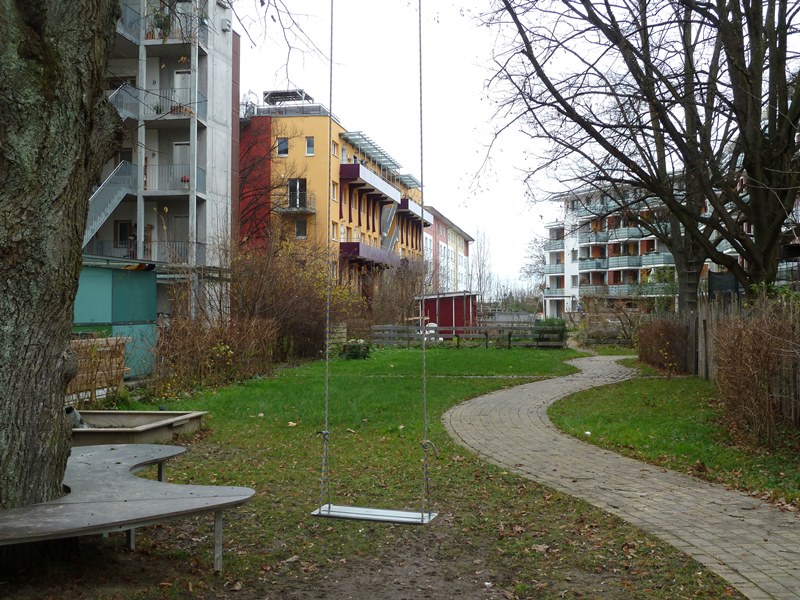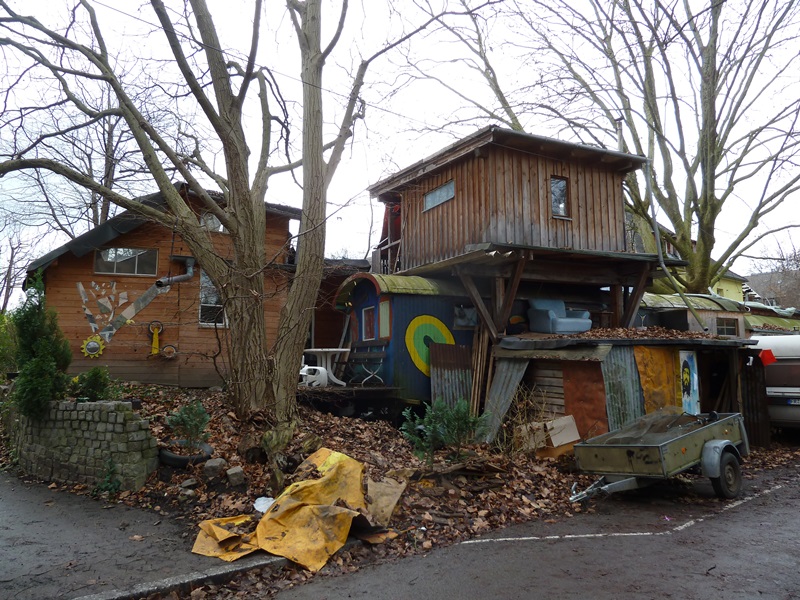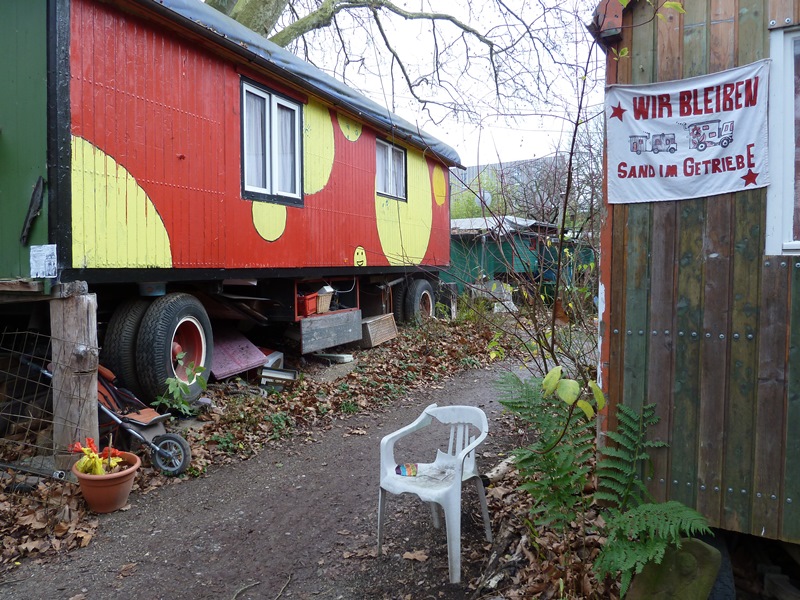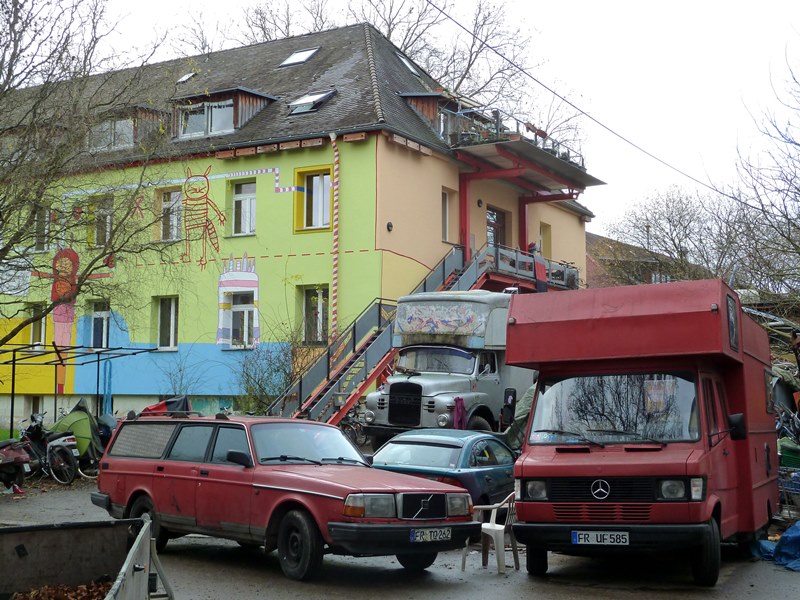Visiting Vauban: two weeks in Freiburg's most exciting and world famous neighbourhood
Staying at the Ferienwohnung Vauban in Freiburg we are in walking distance, with a tram straight to the centre and the surrounding hills.
Strolling through the 'Quartier Vauban' one cannot but think that this is a contemporary realisation of Hunderwasser's utopia, where windows are appropriated by its inhabitants, pavements are undulating and rooftops are covered with grass and solar panels. On the official website it says that "the main goal of the project has been to implement a city district in a co-operative, participatory way which meets ecological, social, economical and cultural requirements. (...) Major driving forces for the development of Vauban are the ideas, the creativity and commitment of the people involved and the common goal to create a sustainable, flourishing neighbourhood." While the key feature of the district is its positive energy balance, I am interested in the way that Vauban's inhabitants have appropriated their homes and gardens. While each apartment block has its own distinct identity, stemming from the eclectic arhcitectural styles, there is a wealth of small interventions observable when strolling through the Vauban. Here, I would like to share my photos and tell a few stories from my walks.
Walking around the Vauban is a feast for the eye; colourful, creative and unexpected architectural features surrounded by green spaces.
In contrast to my experience from other European cities, in the Vauban I am continually surprised by the locals' inventiveness and creativity. Either Vauban's inhabitants are a different bunch of people altogether (of the more artistic and proactive spirit) or there are lower levels of bureacracy in terms of urban interventions and planning permission. I am convinced, however, that the people in Vauban have put in motion an upwards positive spiral of giving and receiving, smiling and helping, contributing and ameliorating. One evening on our way back home, we encountered a basket hanging from a window on the first floor of an apartment block. Inside the basket were oranges, biscuits and a note to help yourself. On another occasion, I observed a woman buying a sandwich for a homeless man outside the supermarket. At the weekends, you see children walking home in the morning with sleeping bags. As it turned out, there are a lot of sleepovers in the nieghbourhood.
During our stay in Vauban, we decided to use the local bio-supermarket without looking at the (double) price tags. There is hardly a meat section to speak off, instead the soy/tofu shelves are prominent. Whether it is Vauban's alternative lifestyle or the German culture, I notice how shops are forward coming to their clients' needs: in the supermarket's freezer you can borrow reusable ice packs to keep your items cold until you reach your house, whereas some smaller shops offer free apples in a basket to their customers.
The apartment blocks have communal spaces in the basement which save on living space in your house and serve as meeting place.
Inside the housing, there is a real sense of community. Our block has a common space in the basement with two spacious rooms. One room has a kitchen and sofa's, which can be booked for parties and meetings. It also provides a small library, games, a football table and ping pong table. The other room has two communal washing machines and a number of drying racks. In front of the buildings, there is a shared bookcase. All these features work on a trust basis and responsibilities for the maintenance are taken on by the locals themselves. Strolling through the area, you see people extending towards the public spaces to clean, tidy and maintain the place for everyone. These gestures make a real difference, although I am not sure whether the residents are still aware how special this is. From my conversations with locals, it looks like the Vauban lifestyle has become the norm but for me, arriving from Italy, I am still marvelling at the atmosphere in this community.
Pet cemeteries, cat walkways, natural borders and signs of protest.
Animals have a special place in this community. Observing the houses, you can find thin staircases, small bridges and highway paths for cats to enter their homes. Many trees have bird houses, and there is chicken coop where (only) children can buy fresh eggs. On one of my strolls, I notice a small pet cemetery. A candle is burning here day and night, and the wooden 'gravestones' show pictures of the buried pet with occasionally a description of its ancestry.
Tree huts, pirate nests and adventurous playgrounds: a very stimulating place for children.
The Vauban is one big adventure playground for children, featuring tree huts, pirate nests, camp fire places and wooden structures that leave everything to the imagination. Trampolines are omnipresent, as are tree swings and sand pits full of toys. The wilderness of the green spaces between the housing provide ample space for adventures, while remaining safe playgrounds without cars. The social control that usually stems from mixed use housing, as described by Jane Jacobs, is achieved here by surrounding the playgrounds with so many windows from all the apartments. The most exciting place, however, is the Kinderabenteuerhof, a children's adventure ground that offers toddler, kindergarten and after-school care. It has workshops, a theater group, fire pits, play/build areas and various animals such as horses, pigs, chickens and rabbits. The concept is based on holistic pedagogy and elementary experience, as well as openness, inclusion and participation, personal responsibility as well as responsibility for nature (animal care and sustainability). On my visit, I see a man play guitar for a group of toddlers, while the older children are pushing each other in trolleys through mud. We return on Saturday for their monthly action day, on which there is food and drinks, a christmas market, torch making and animal feeding. No excuses to watch tv or play video games!
Vauban's campervan area is intriguing, both in terms of its continually changing formation and its political statement to allow such a lifestyle.
Vauban's primary transport infrastructure is the tram which brings you to the centre in 15 minutes. The second, if not most popular, mode of transport is the bike (or scooter for the kids). The district is car free, prioritising walking and cycling through the shared paths between the housing blocks. It is quiet and peaceful, a real pleasure walking around and listening to the birds. This is in stark contrast to Italy's car-centred cities where pedestrians are totally neglected, forced to walk on the street when the pavements becomes too narrow or simply disappears.
In and around the Vauban, there is a surprising amount of campervans where parking is possible. The campervan is a symbol of a lifestyle choice, offering flexible and cheap road-trip or camping holidays. In Vauban, there is even an area taken up by long-term 'mobile' residents. A variety of vans, trucks and vehicles shows traces of inhabitation: some smoke arises from a pipe, a curtain covers the self-cut window of a van, and building materials are scattered around the campers. This space is clearly contested, as banners are hanging to support these alternative-style residents. Also elsewhere in the neighbourhood, a sense of protest is discernible in various corners and windows; flags against nuclear energy, banners supporting midwives in their fight with insurance companies, and the Tibetan flags in solidarity (or merely as decoration). Could all this point to the emergence of the 21st century hippy, concerned with politics, education, sustainability and individual responsibility? I, for sure, wouldn't mind moving here.
Review of the Venice Art Biennale 2013
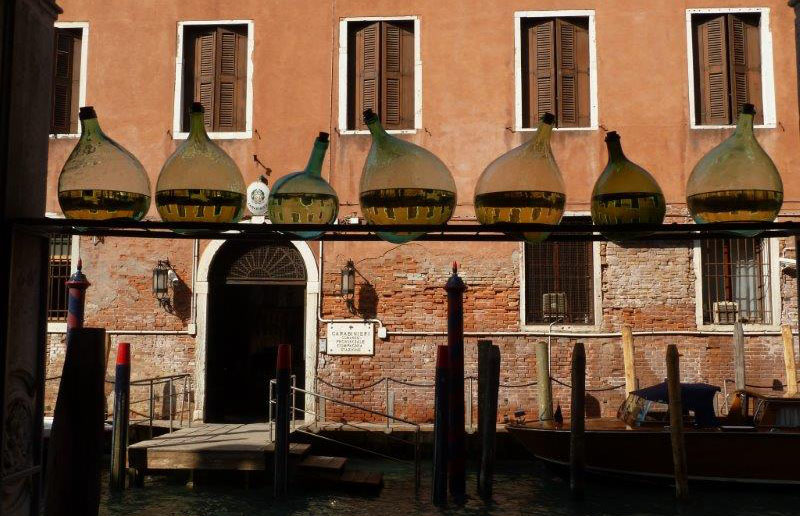
Moving from country to country in short time spans, the pavilions at the Venice Art Bienniale reveal how national identities are produced and shaped. Not surprisingly, they often reinforce our expectations, and unfortunately also our preconceptions. The African pavilion deals with Apartheid leftovers, Finland with natural environments, the Greek with economics and the Brits with their political misery diluted by milky tea. While the latter was clearly overhyped by the British online guides, we were blown away by the following artists:

Camille Henrot, exhibiting at the Arsenale, leaves us deeply impressed through a screen capture of her computer, showing her research that attempts to encapsulate all of human's knowledge. This multilayered work is both original and mundane, as it reflects our own continuous scrolling through neverending windows of information.
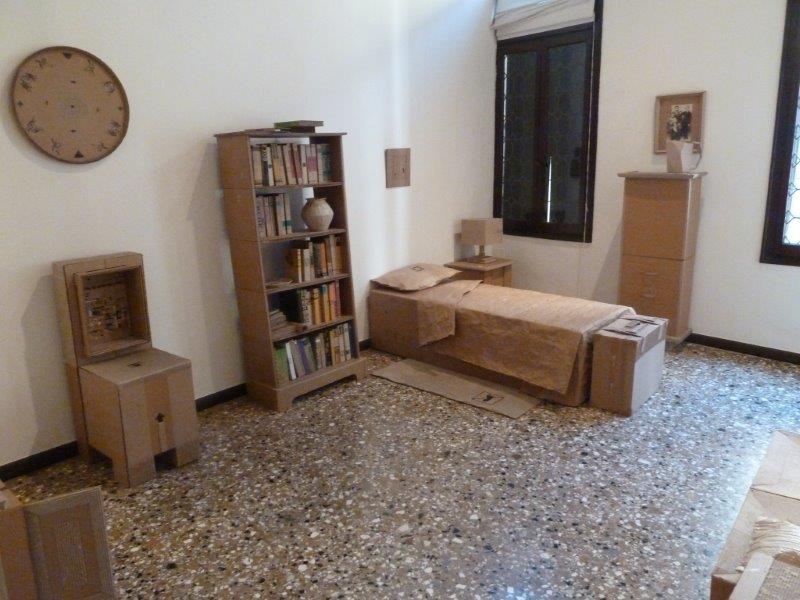

Iraq welcomes us with tea and cookies in a homely setting, which is much appreciated after elbowing through Venice's crowdy center. The individual works exhibited in this large apartment make a strong impact: a video revealing the daily hardships of alcohol smugglers between Iraq and Iran; the transient nature of 'home' in the cardboard room; and cartoons about the presence of war in everyday life.

From all national pavilions, Greece presents maybe the most urgent and timely work, while refraining from documentation. The three film narratives present different economic situations; a rich Greek art collector who makes flowers from 500 euro notes out of boredom, a homeless immigrant who finds the flowers while searching for recyclible metals in a bin, and - clearly metaphorically - a German artist who becomes the link between both stories. The work is informed by interesting texts on various kinds of currencies and their modes of exchange.
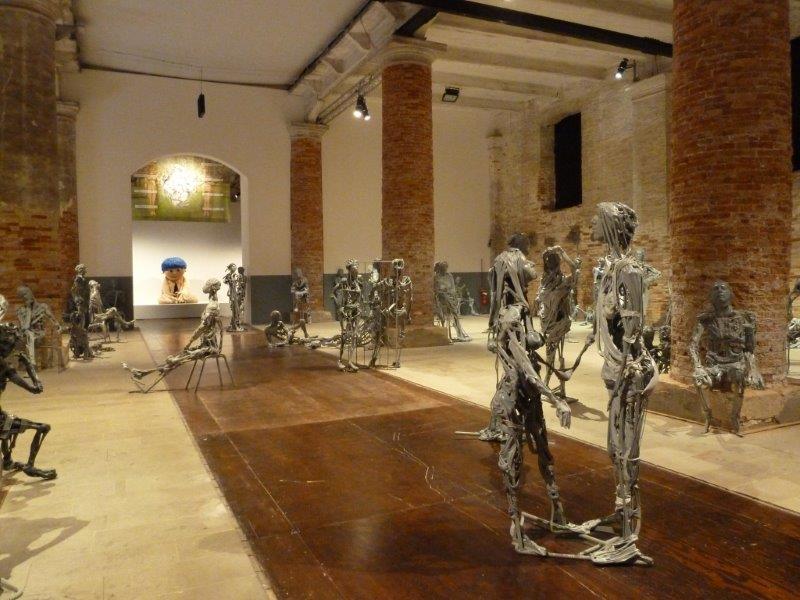
Extremely delicate and simulatenously robust are the plastic sculptures by Pawel Althamer. Walking between the life-size figures which have faces cast from the city's inhabitants, evokes a sense of calm and tenderness - a collective introvertness.
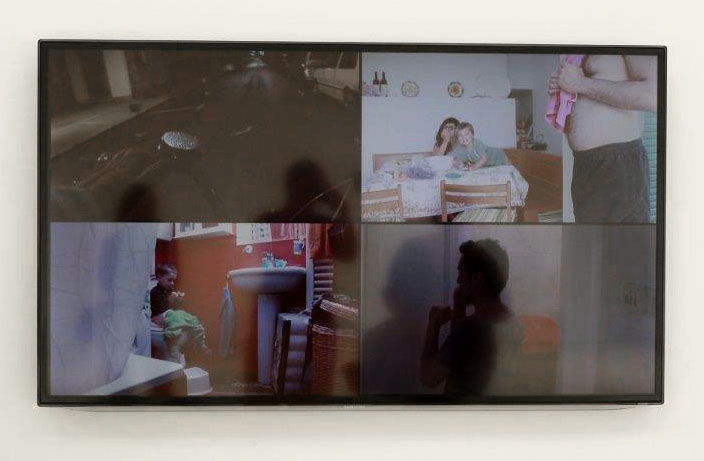
Much on the contrary, the humour in the Musical Diary video by Milos Tomic in the Serbian Pavilion causes hysterical laughter! It is much in the style of artist Guy Ben-Ner, in the way that the artist interacts with his children to create hilarious and creative situations that would melt everyone's heart. It merges art and life in a way that previous 'isms' have not managed.
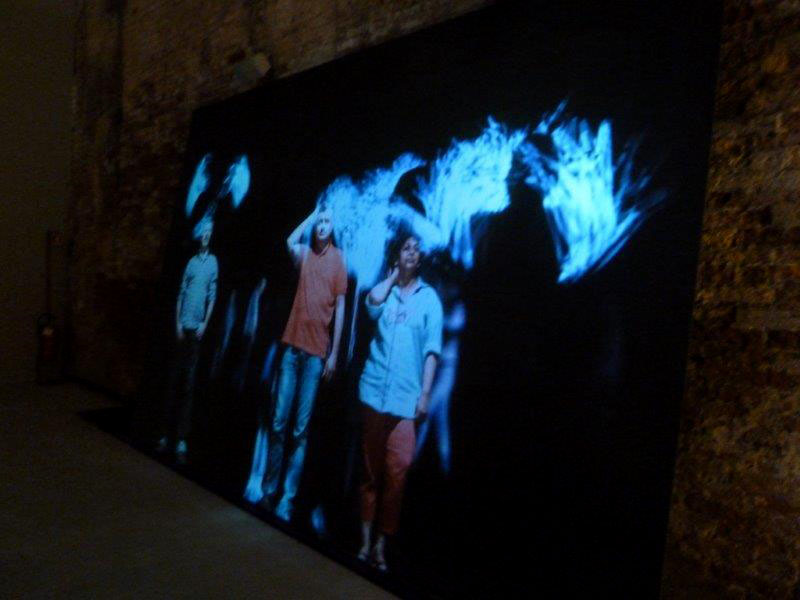
The Holy See presents a spectacular new media work by Studio Azzurro. It is an interactive installations with large screens, on which people walk around. If touched, the person comes to the fore and communicates to you through sign language, movements which are poetically traced in the air.
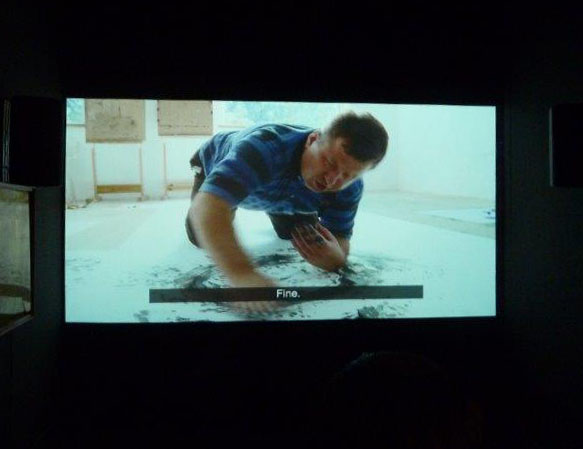
In the Central Pavilion, Artur Zmijewski's intriguing video draws crowds through its down-to-earth documentation of the painting process of blind participants. Even more intriguing is the subsequent internal dialogue on the ethical dimension of the work, apparently a reaction he wants to evoke with his oeuvre.
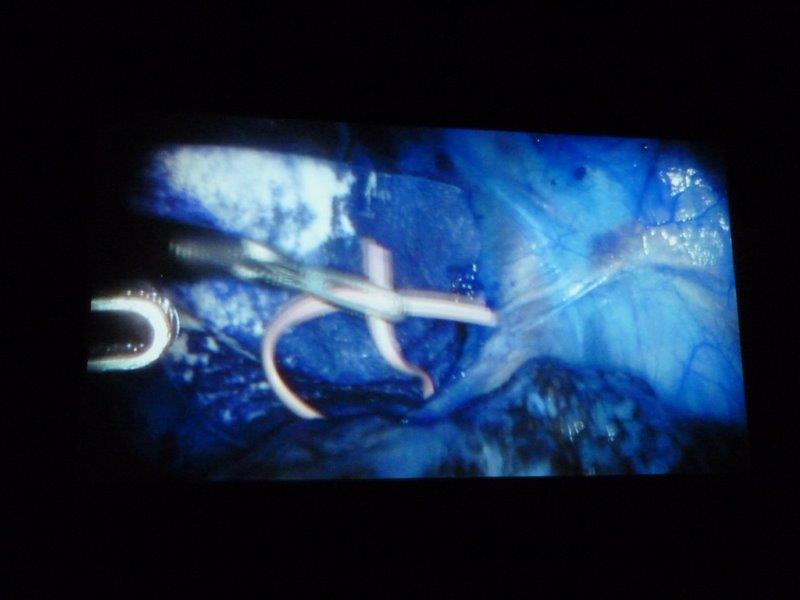
Yuri Ancarani's video of high-tech endoscopic surgery steals the show in sense of impact. The work Da Vinci (2012) was shot inside a hospital operating room, equipped with cutting-edge technology, showing skilled doctors maneauvring through a patient's intestines. It is hard to tear away from this highly invasive bodily experience, with curiosity and disgust stetched to their furthest limits.

Another highly moving video documents the experience of immigrants in Italy. Their stories are emotional accounts of xenophobia encountered during their long-term stay in Italy, exposed by the artist Bouchra Khalili. It's a work which should have received more exposure, for example at the Italian pavilion itself, but its isolated location reveals that the critical topic is sadly too sensitive for the host of the Biennale.

Also Venice has a pavilion, which shows amongst others large hyperrealistic photographs by AES+F. These surreal scenes of multicultural figures at an airport and an outdoor event seem to reflect the increasing mixing of co-habitations of cultures.
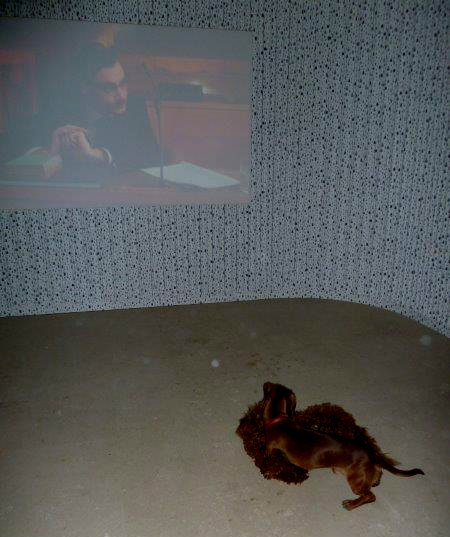
The pavilion of Slovenia shows two thought provoking videos; an art committee discussing the acceptance of an artist's work, and an interview with an architect as a parody on the architectural profession. It takes a while before the earnestness of the works reveals the underlying sarcasm. A sense of humour was added when two dogs entered the space playing wildly - apparently not part of the exhibition.
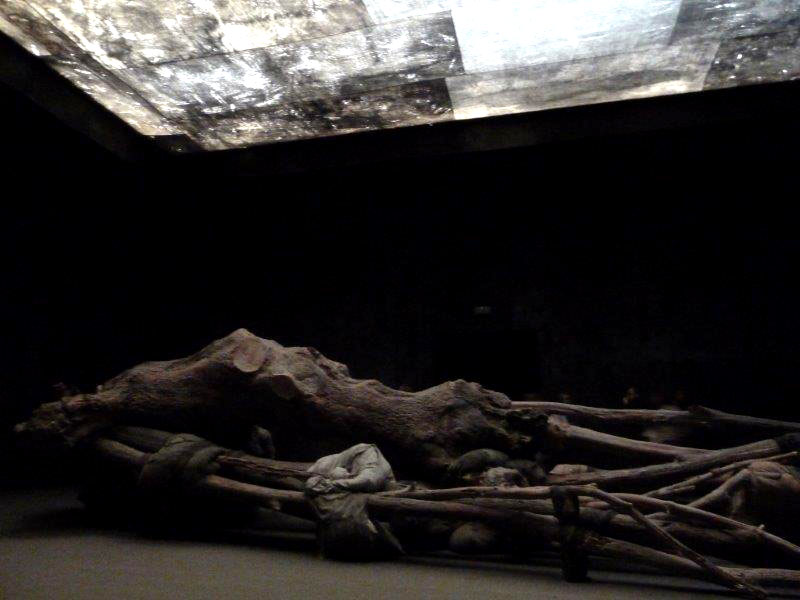
Belgium offers a poetic work in the form of cripple wood as a massive wax sculpture, in an atmospherically gloomy darkened space.
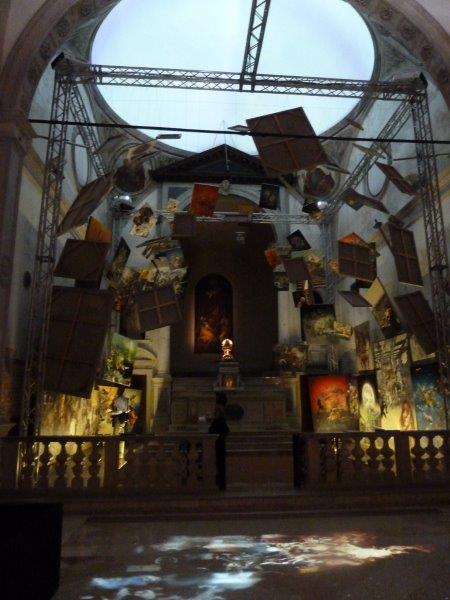
Finally, Zhong Biao's multimedia installation in the Santa Maria Church is breathtaking. The floating paintings are both cheesy and captivating, with the sound and light effects stimulating all the senses. Good to see painting coming alive in such exciting large endeavours, especially since the Bienalle was quite low on painting.
Although it is expected that sensorial and multimedia installations leave the deepest memories, this year's biennale has convinced me of the power of video in the hands of artists. While I usually don't have patience for time-based media, it is both the humour and the gravity of the stories that has not only absorbed me, but invited to reflect and to learn.

